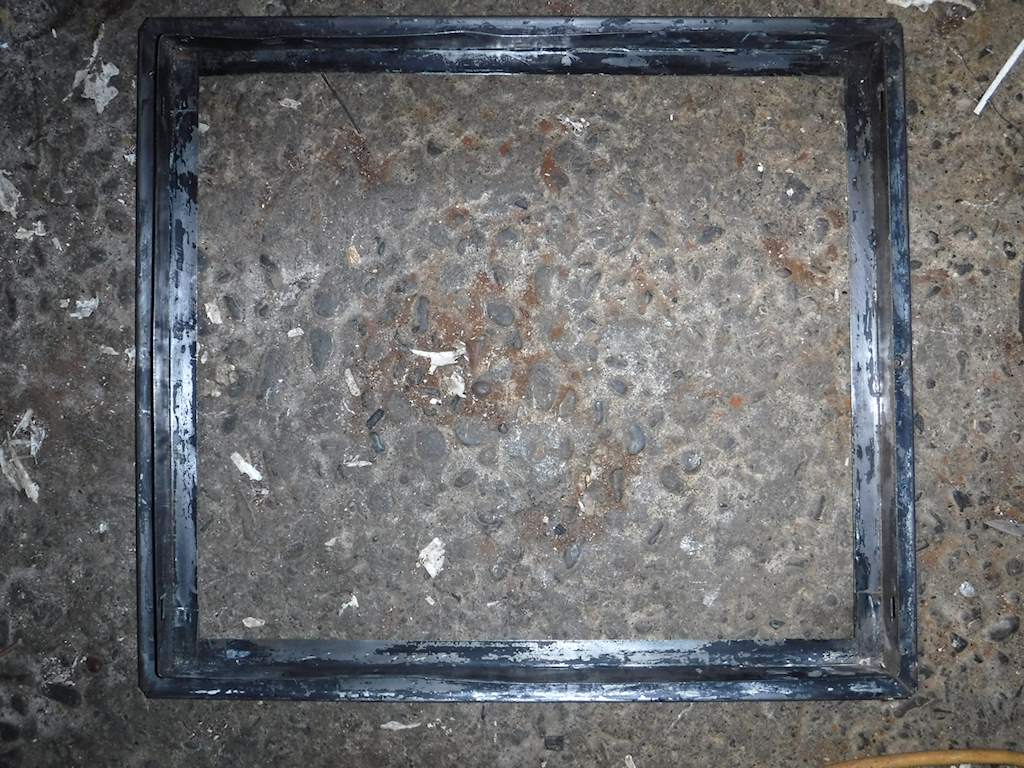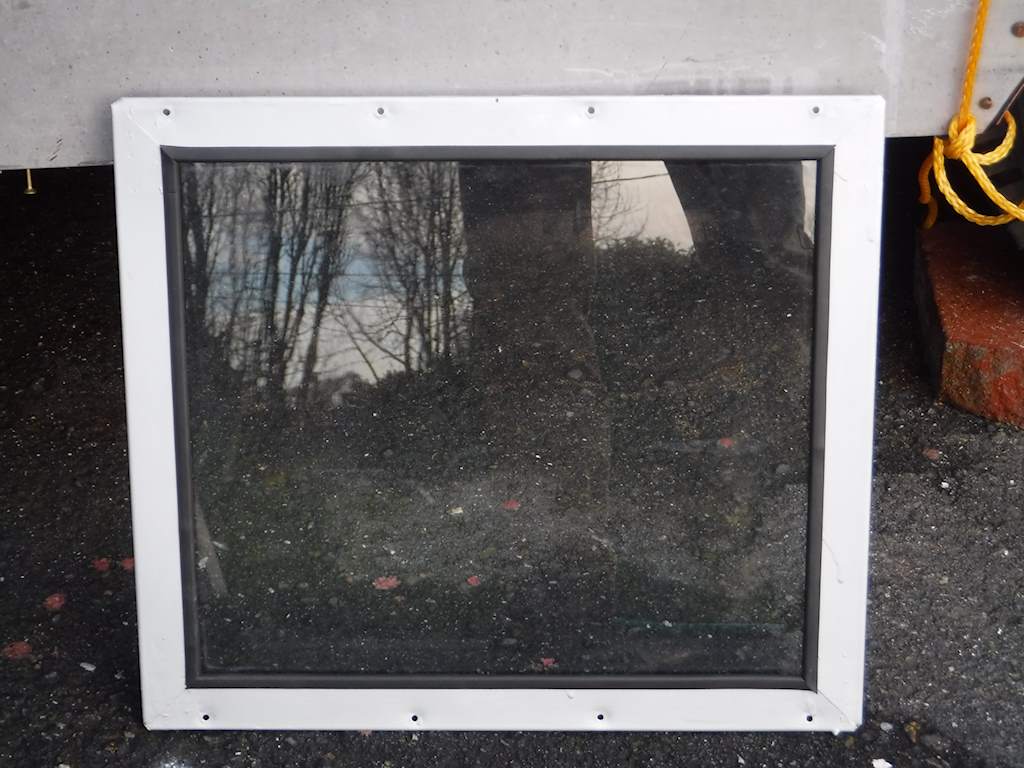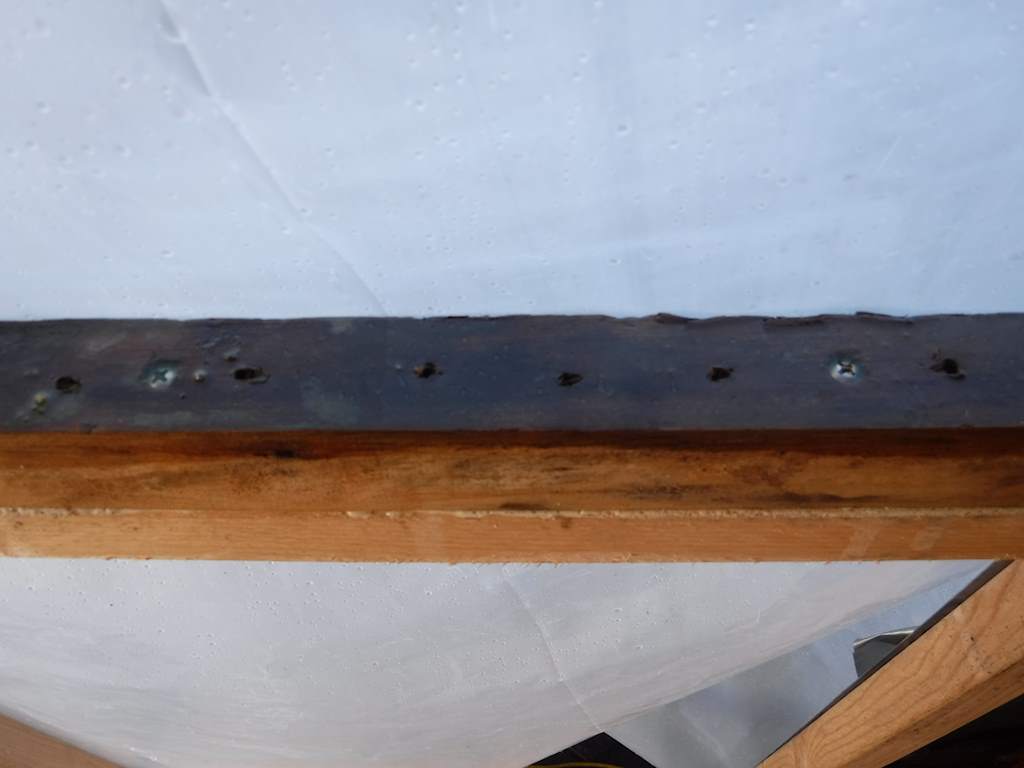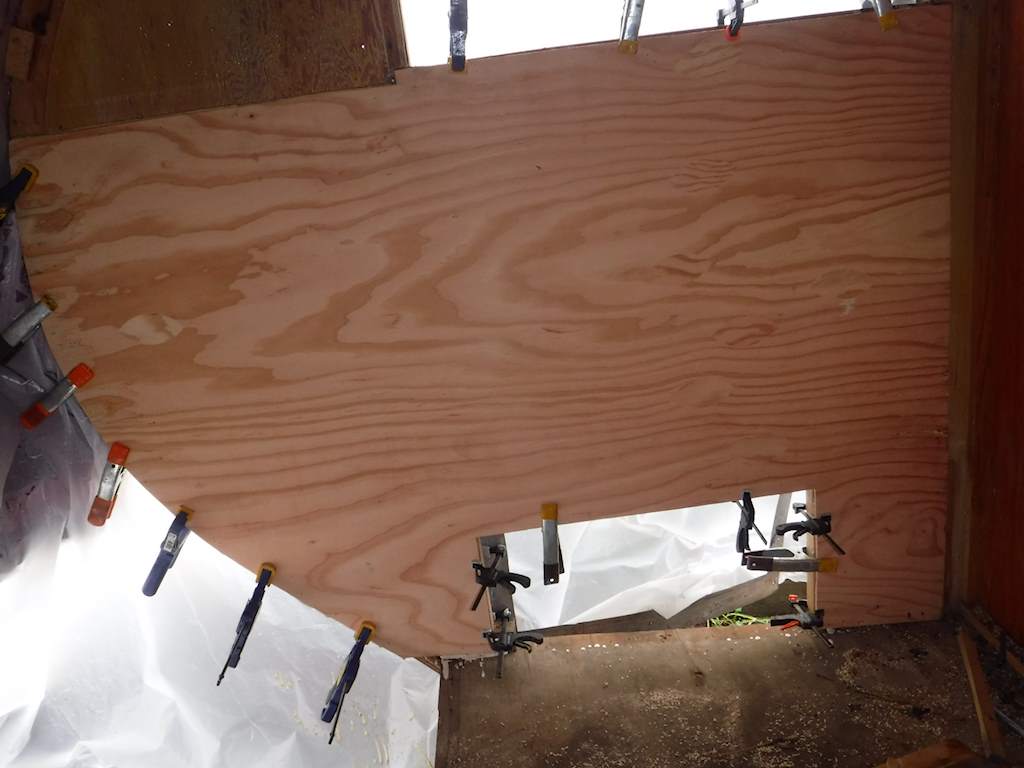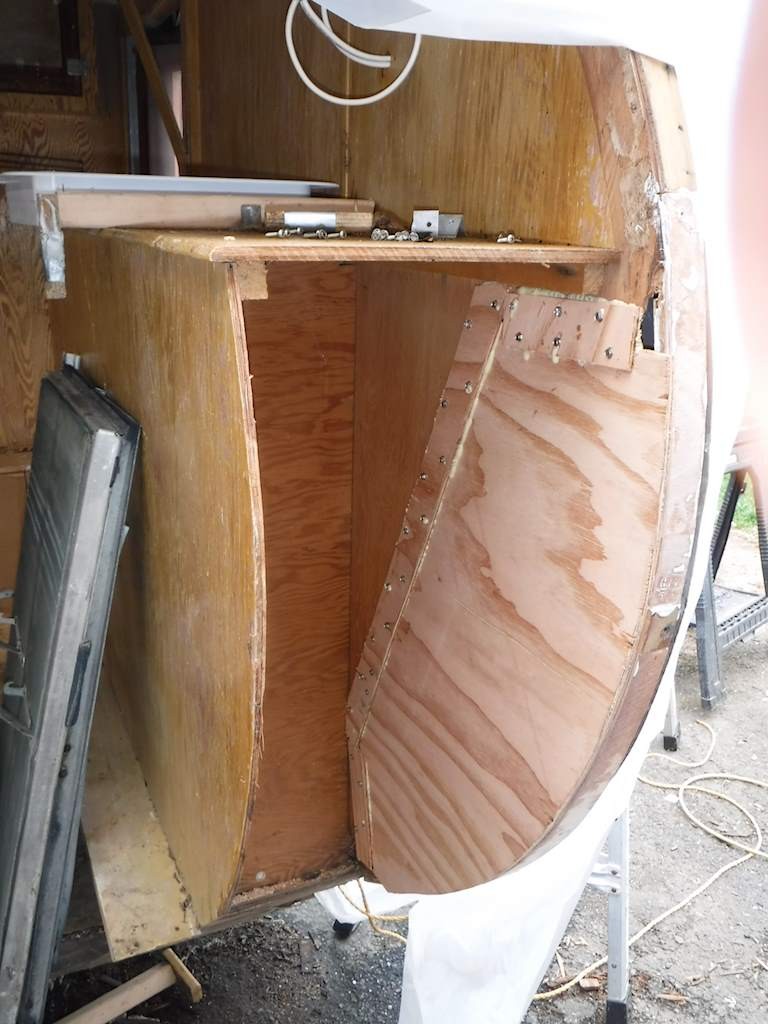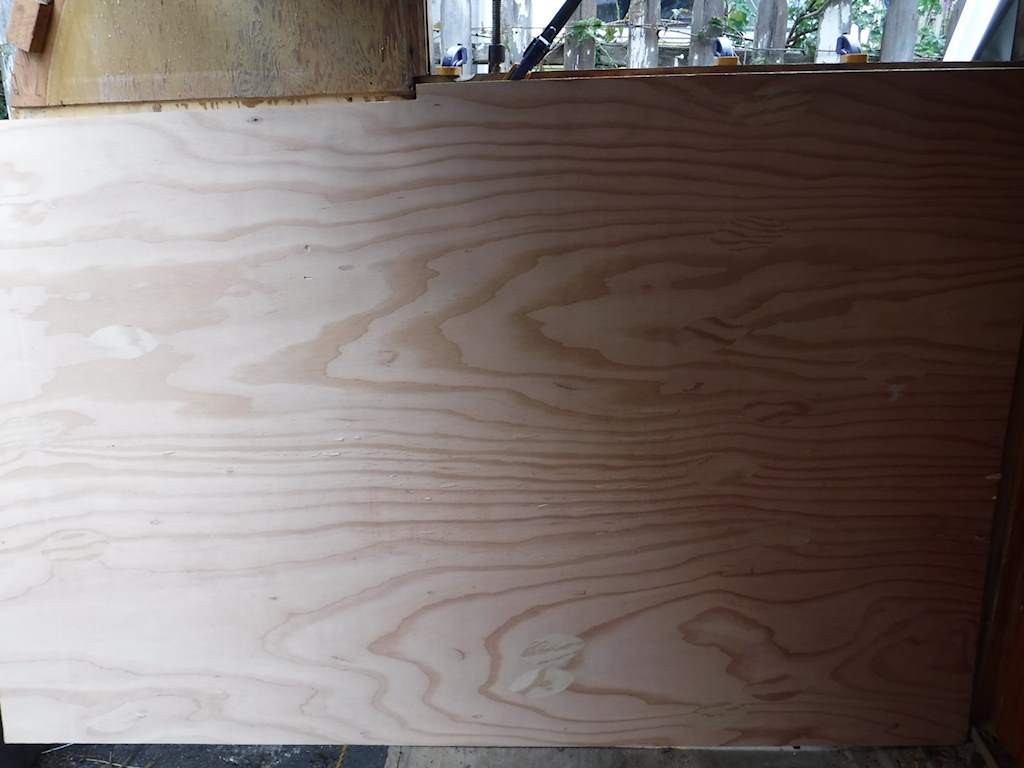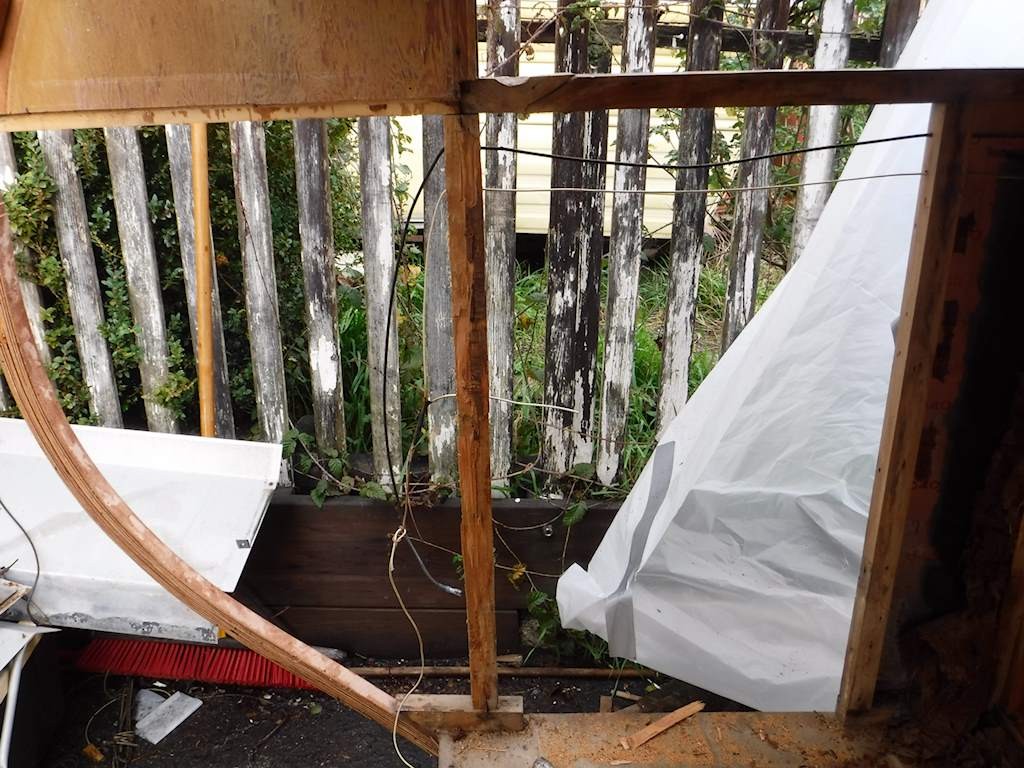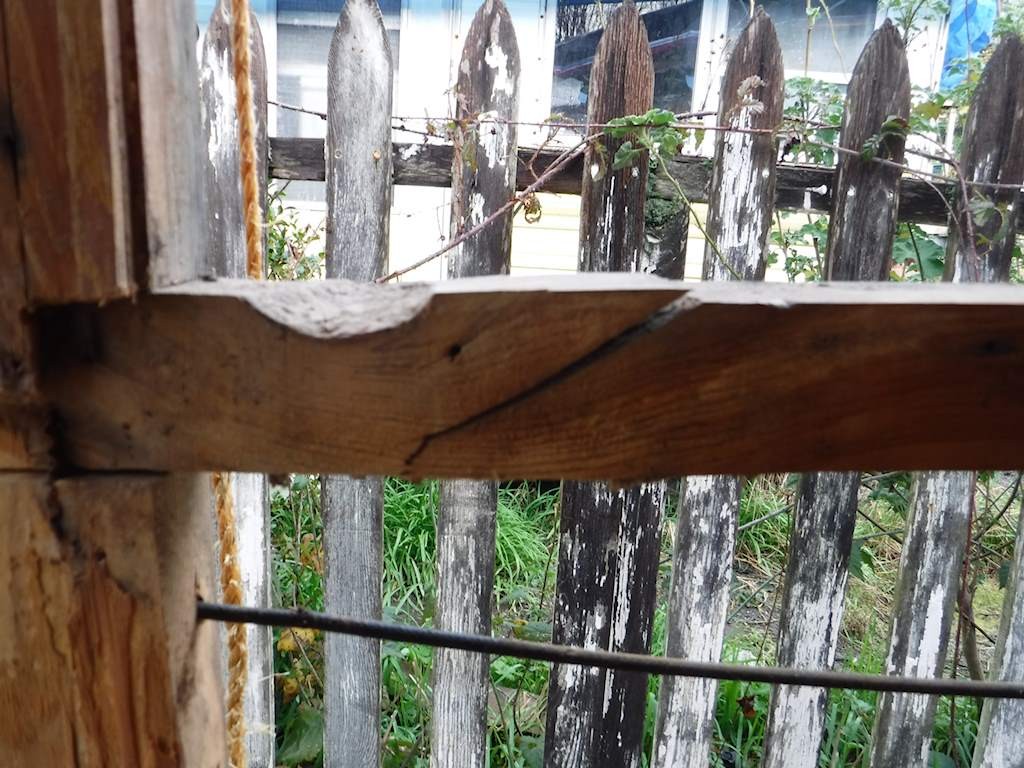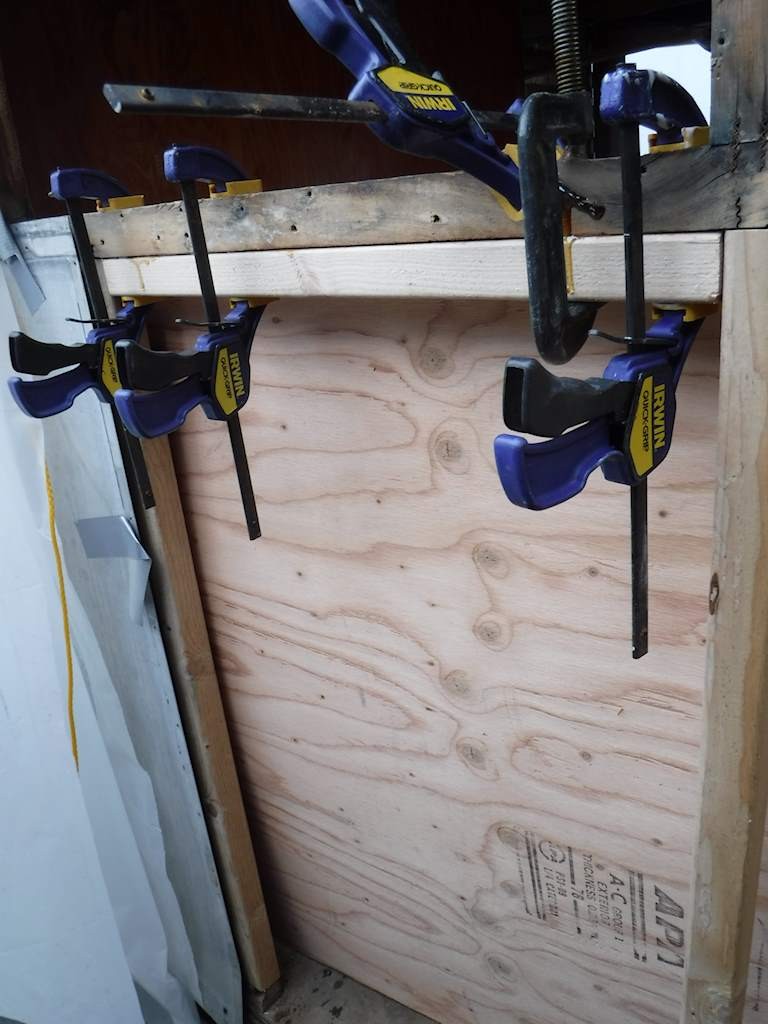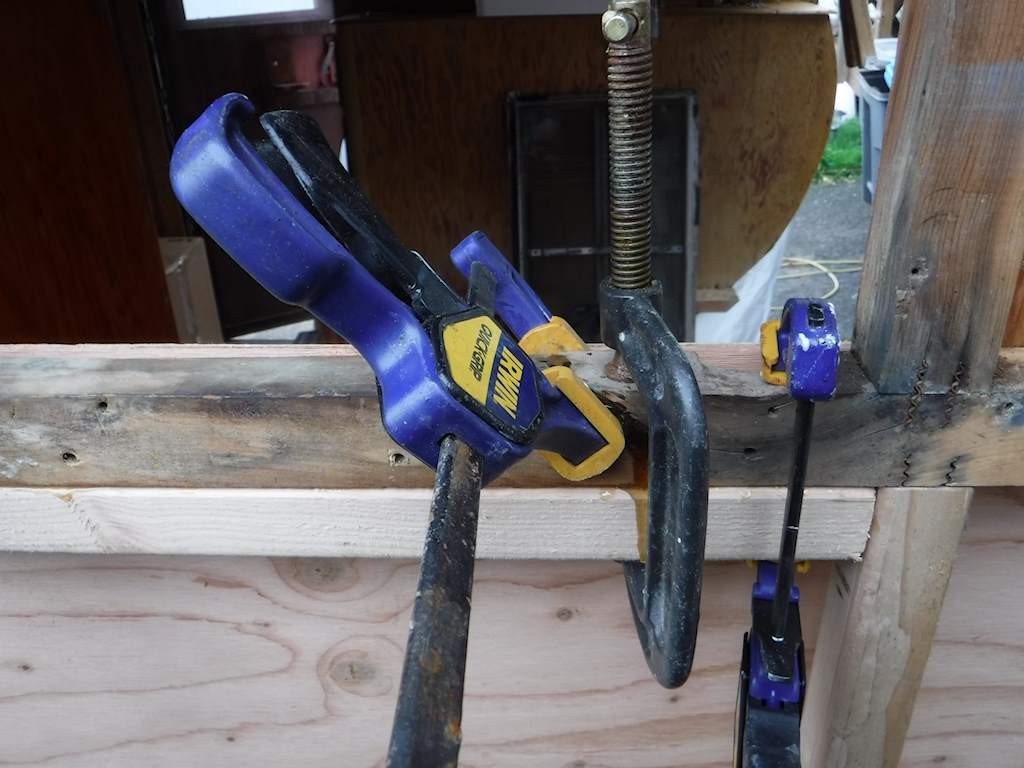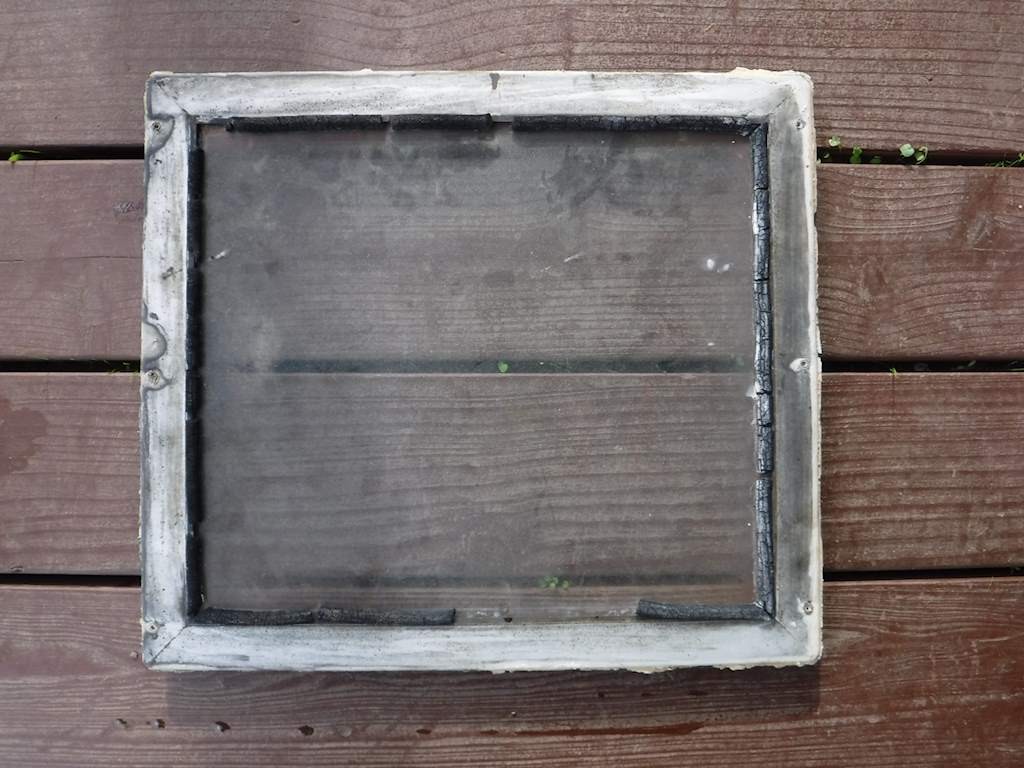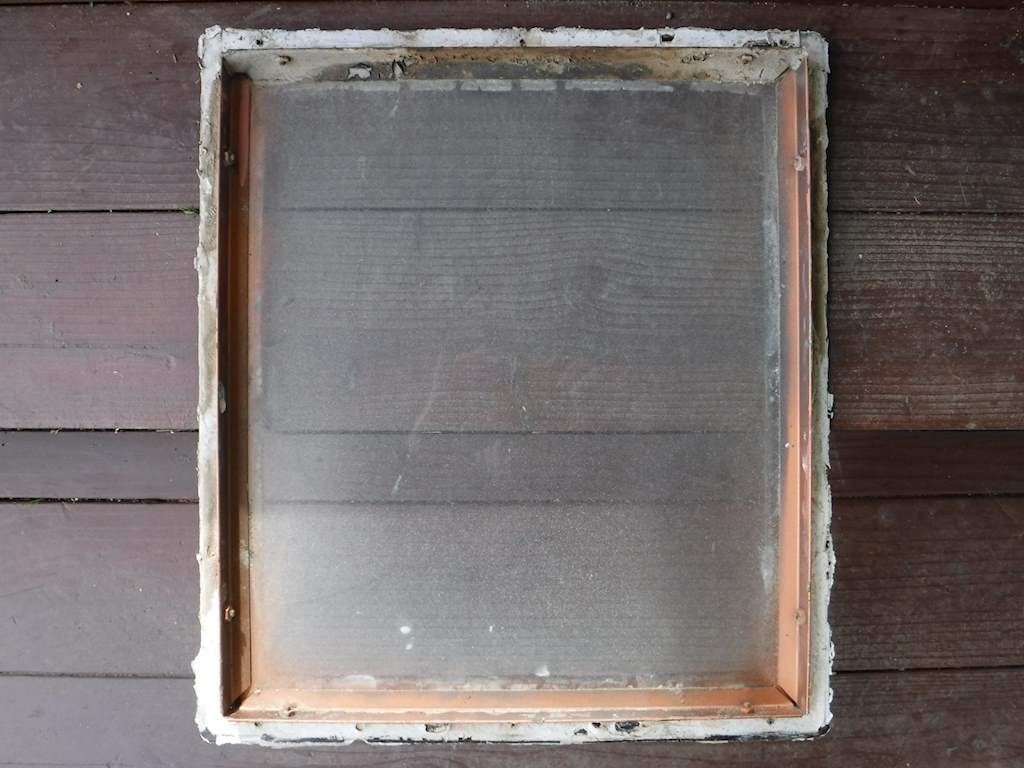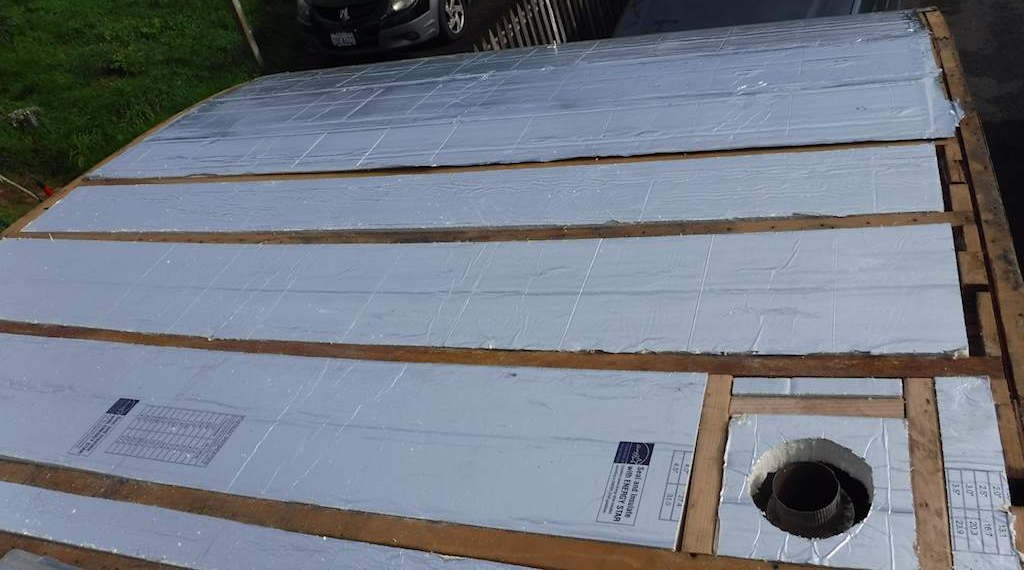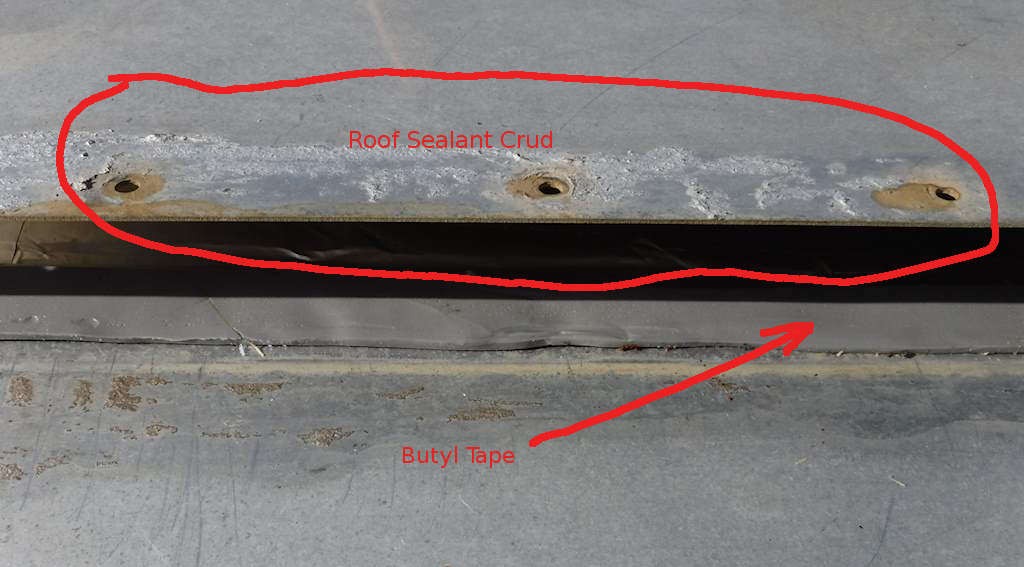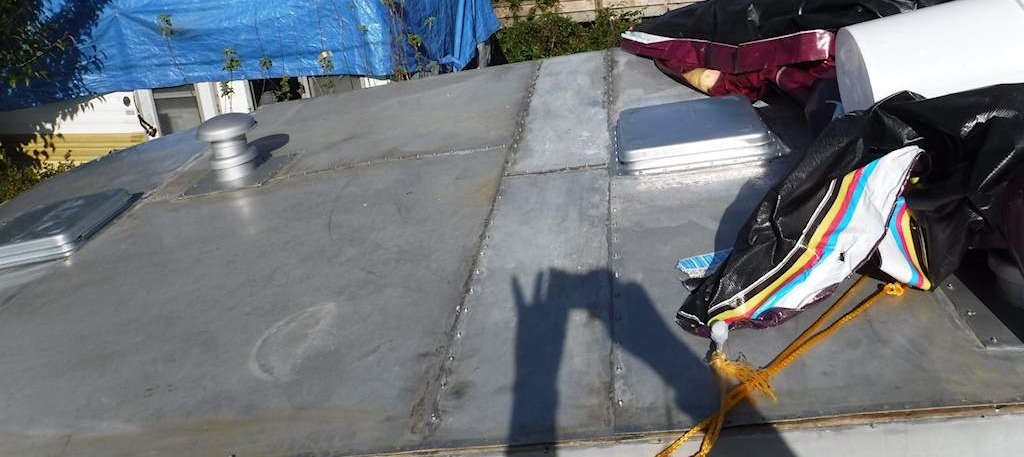Just a couple photos today. I finished polishing the two front panels. I ran wires for the two front reading lights. Those are the first two where the wires are going to the interior, to the final location. I had to make cutouts in the insulation for the wires. Here we are with the wires in andthe insulation on (minus a few feet of aluminum tape. I had run out. After this photo I got more).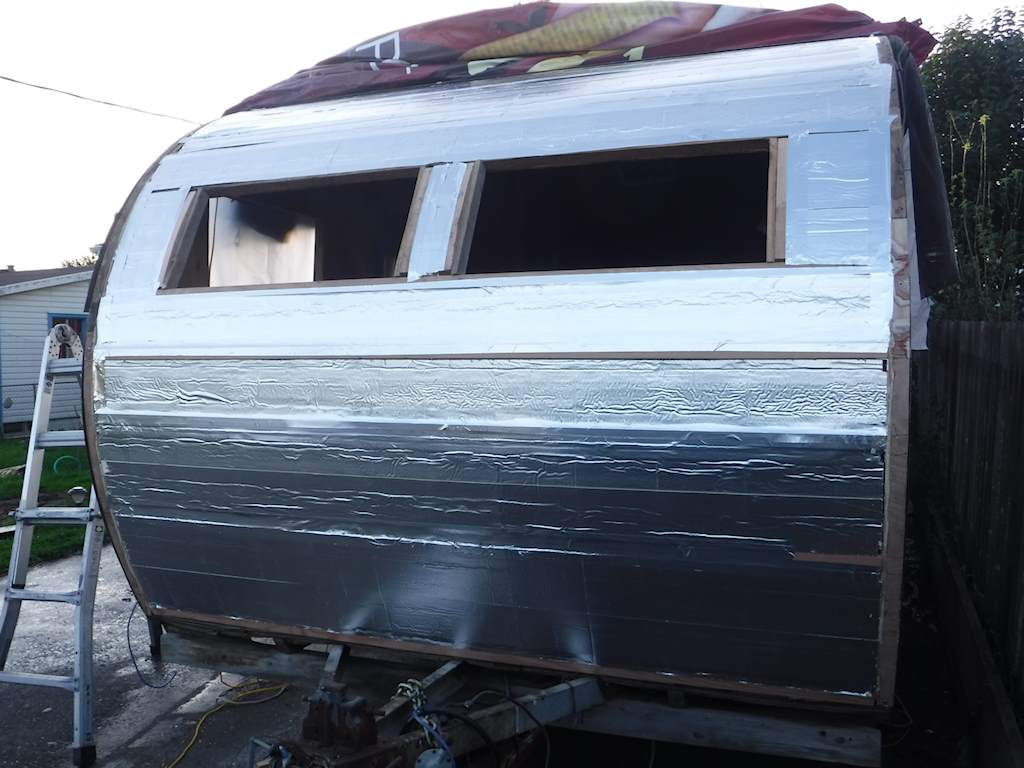
Again I had some final tweaks to do. Planed a bit off the wood pieces around the windows. Had to drill four new holes on between the two panels on the right. A little push here and a little push there, and the front panels and window are on.
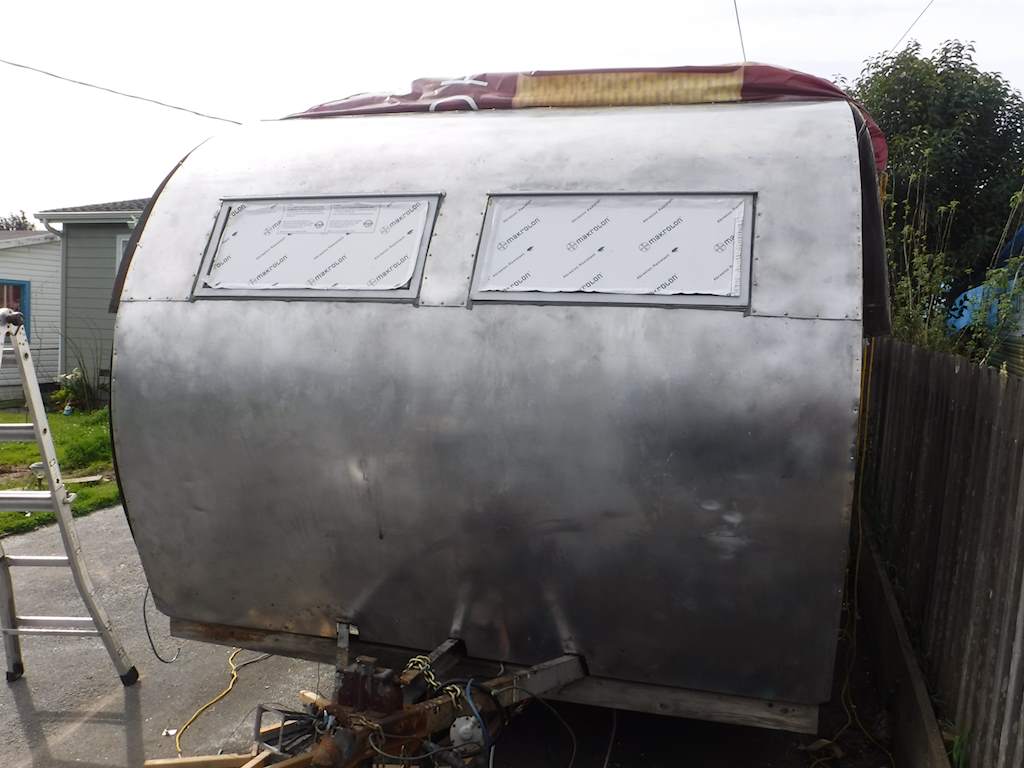 Those aren’t glass. They use polycarbonate with anti-scratch coating. The white is the covering on the polycarbonate. I’ll take that off when all the work is done. There are aluminum awnings over the front windows, but I’ve only polished one of those. Also I’m almost out of screws. After I polish the other awning and the screws come in I’ll reinstall both. I’ve used something like 500 screws so far. I have a couple hundred around and four hundred more on order. There is some damage on the front, and one place where the skin is torn through. I plan to put another layer on the very front, to cover these and to add some protection. It’s easier, cheaper, and faster to replace a strip across the front rather than the entire panel.
Those aren’t glass. They use polycarbonate with anti-scratch coating. The white is the covering on the polycarbonate. I’ll take that off when all the work is done. There are aluminum awnings over the front windows, but I’ve only polished one of those. Also I’m almost out of screws. After I polish the other awning and the screws come in I’ll reinstall both. I’ve used something like 500 screws so far. I have a couple hundred around and four hundred more on order. There is some damage on the front, and one place where the skin is torn through. I plan to put another layer on the very front, to cover these and to add some protection. It’s easier, cheaper, and faster to replace a strip across the front rather than the entire panel.
Now I’m working getting the trailer on supports stable enough that I can safely work under it (that part’s fairly easy), and where I can separate the frame from the body (not so easy).
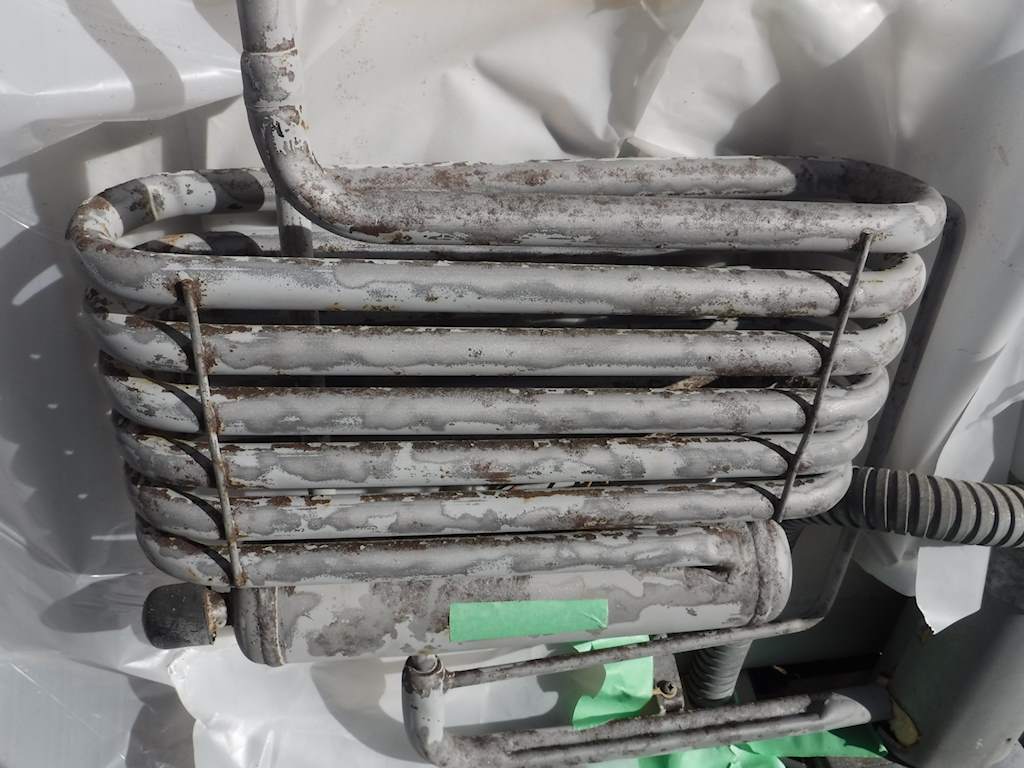
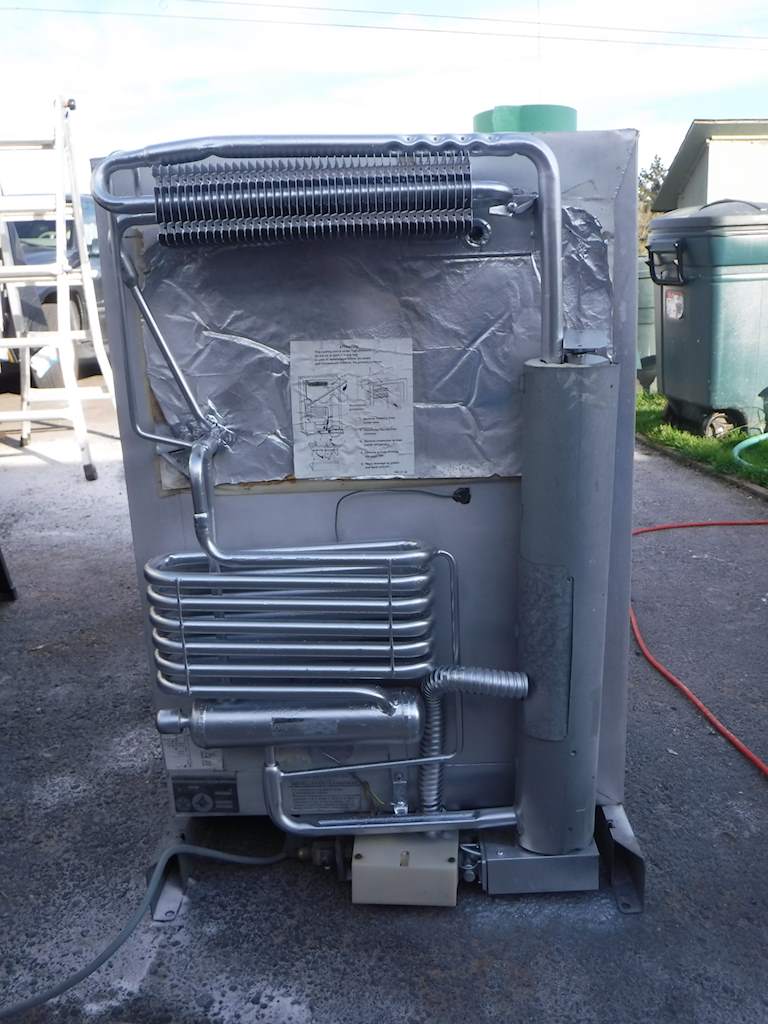
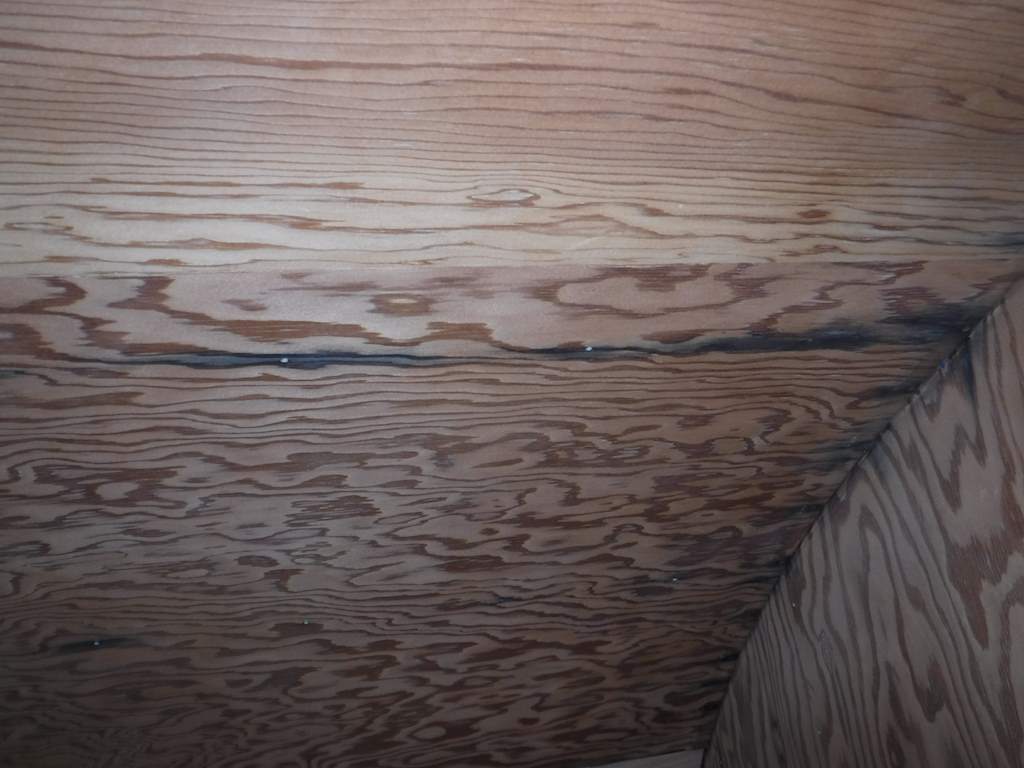
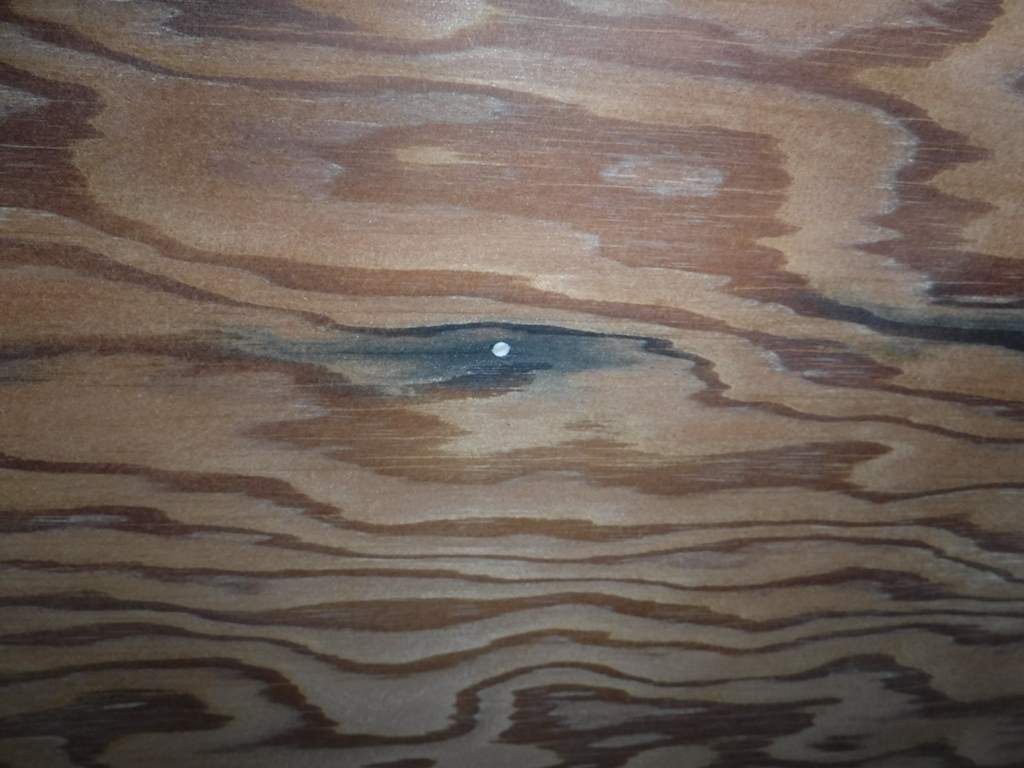 and over an hour or so with periodic sponging it on, it went to
and over an hour or so with periodic sponging it on, it went to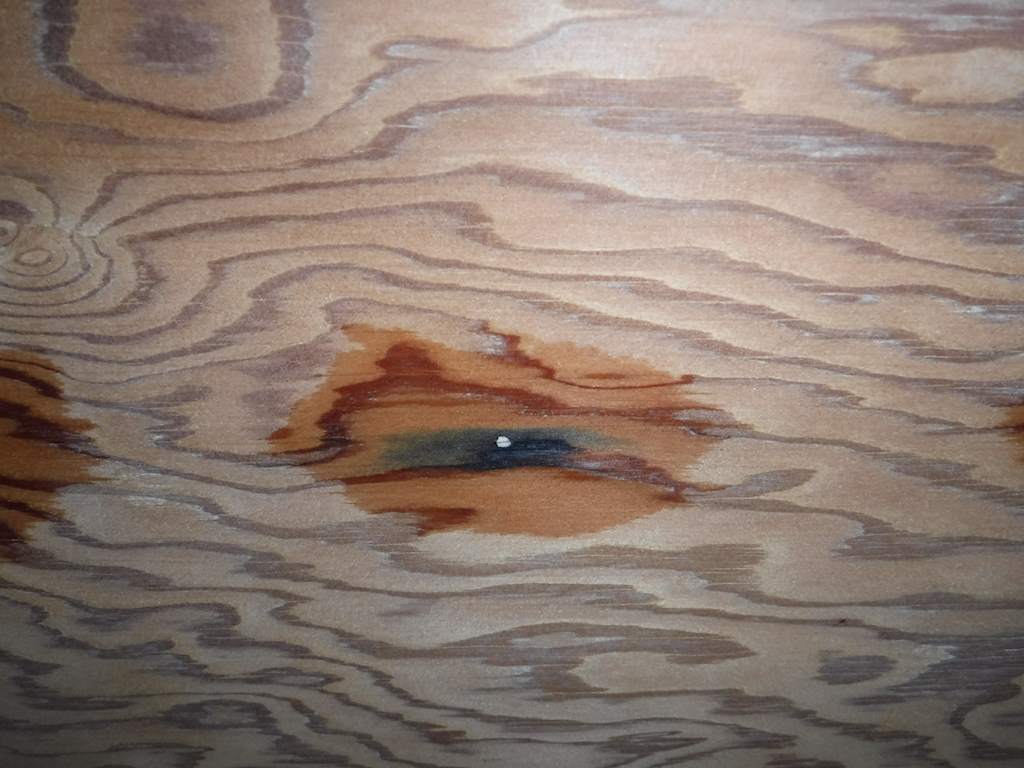
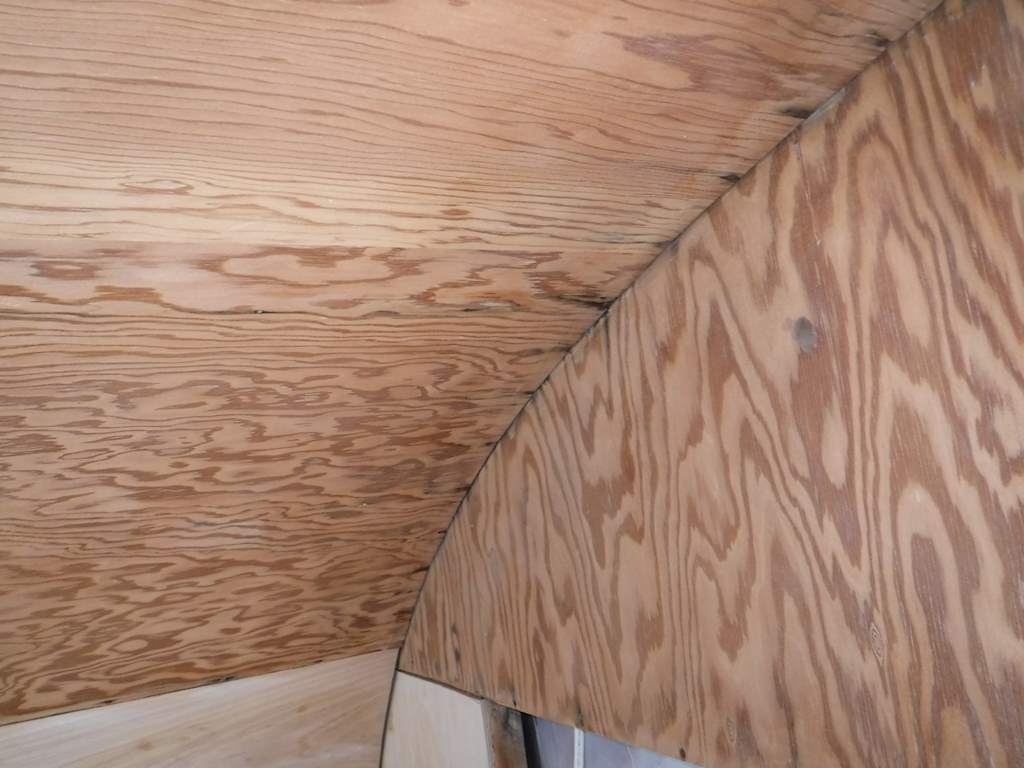
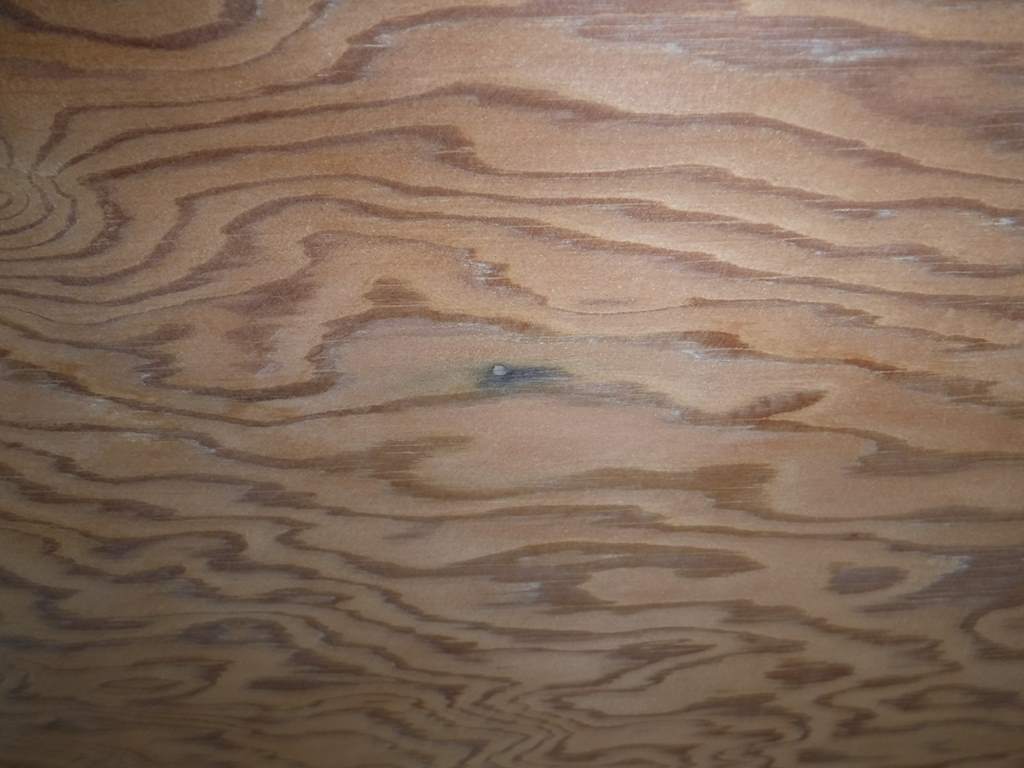 I could have done a bit more, but I kind of wanted to see how this last bit would be. Most or all of what’s left will be covered with molding. After staining and one coat of polyurethane, the front interior looks like this:
I could have done a bit more, but I kind of wanted to see how this last bit would be. Most or all of what’s left will be covered with molding. After staining and one coat of polyurethane, the front interior looks like this: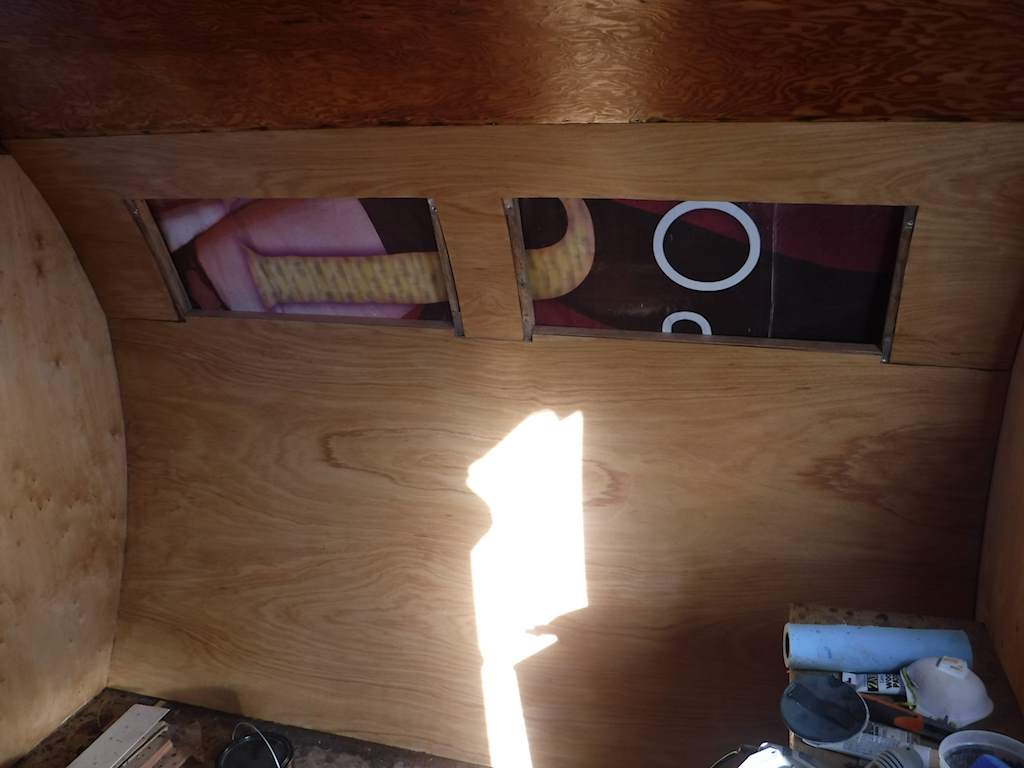
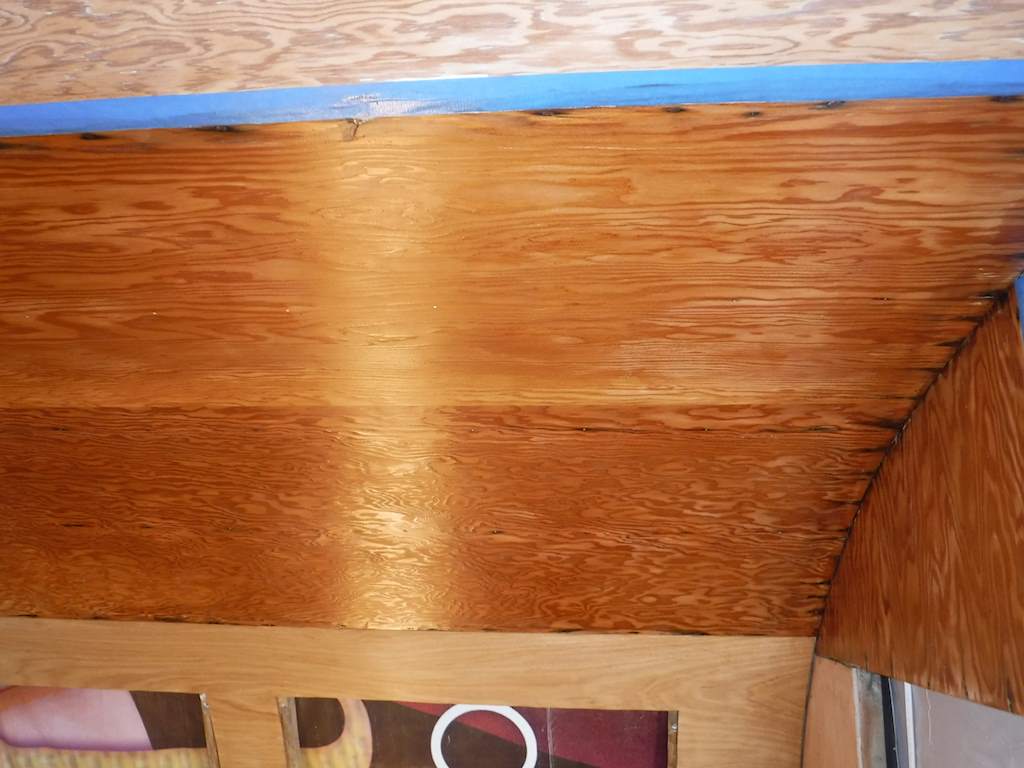
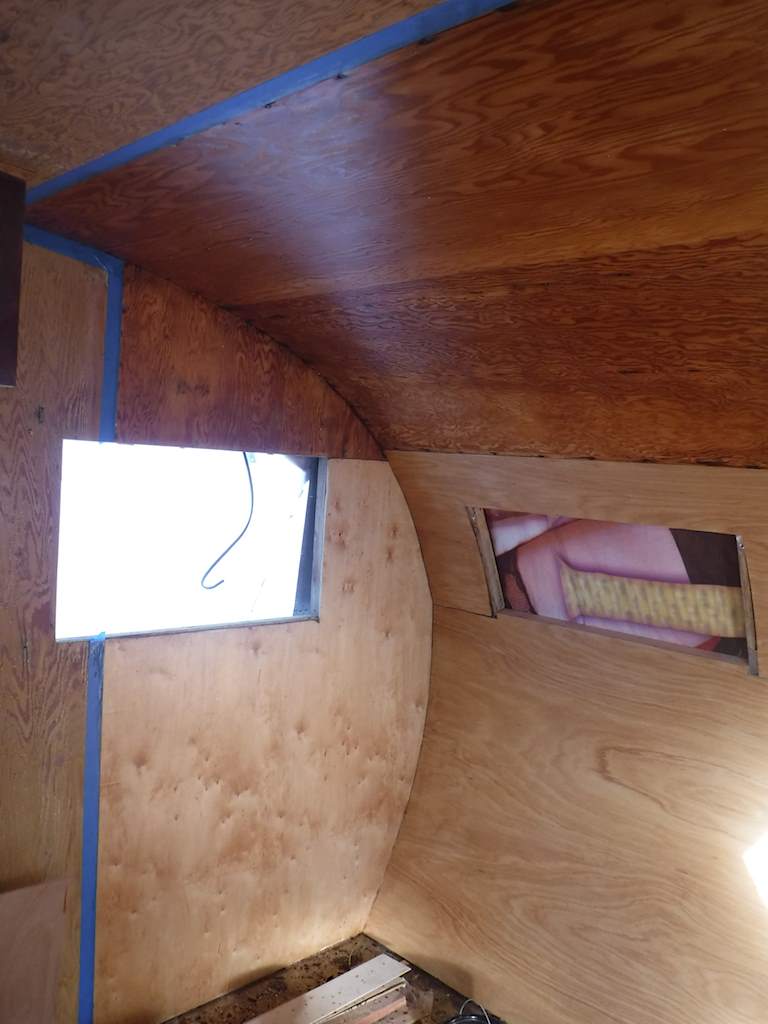
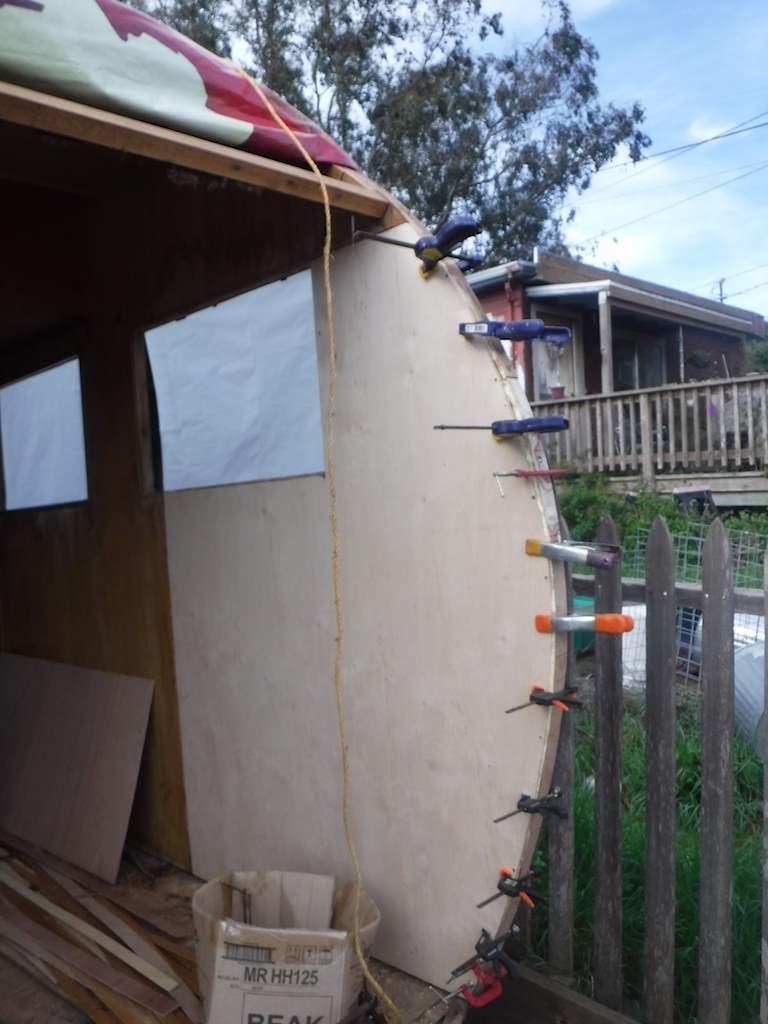
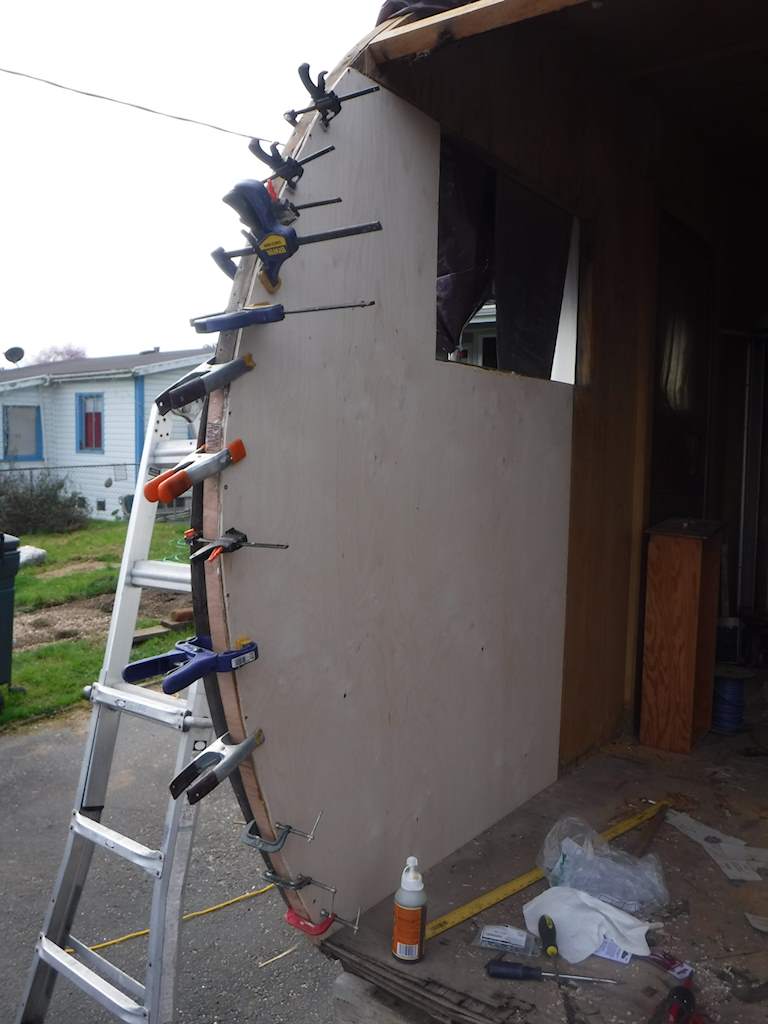 Then replaced the cross supports.
Then replaced the cross supports.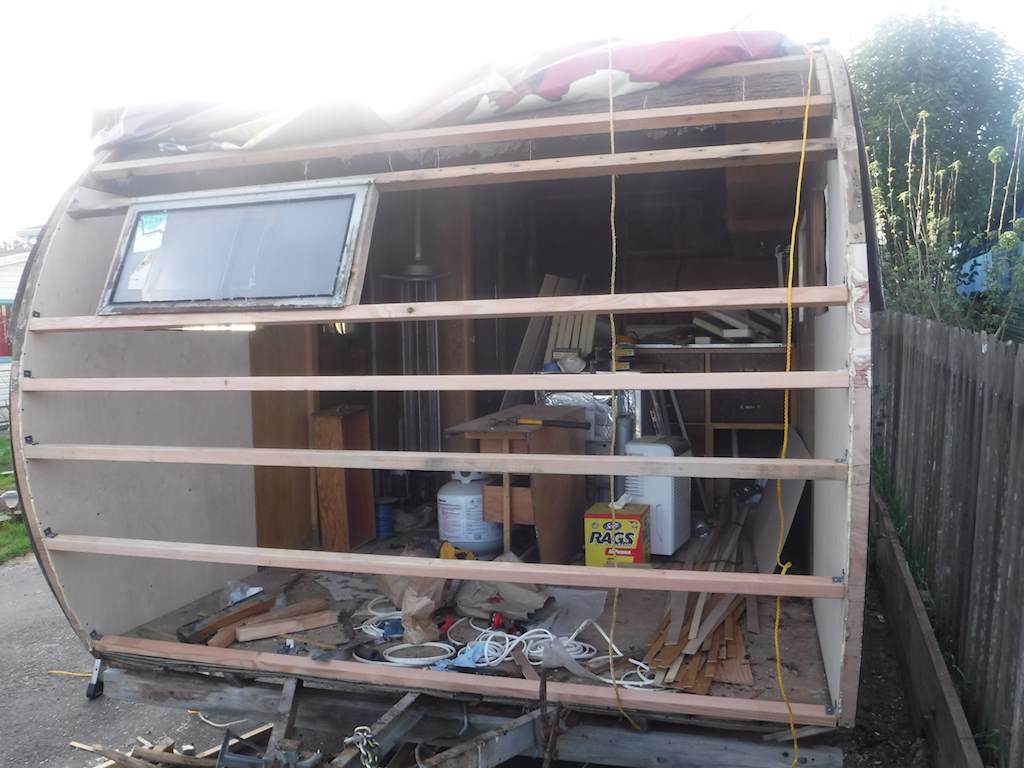
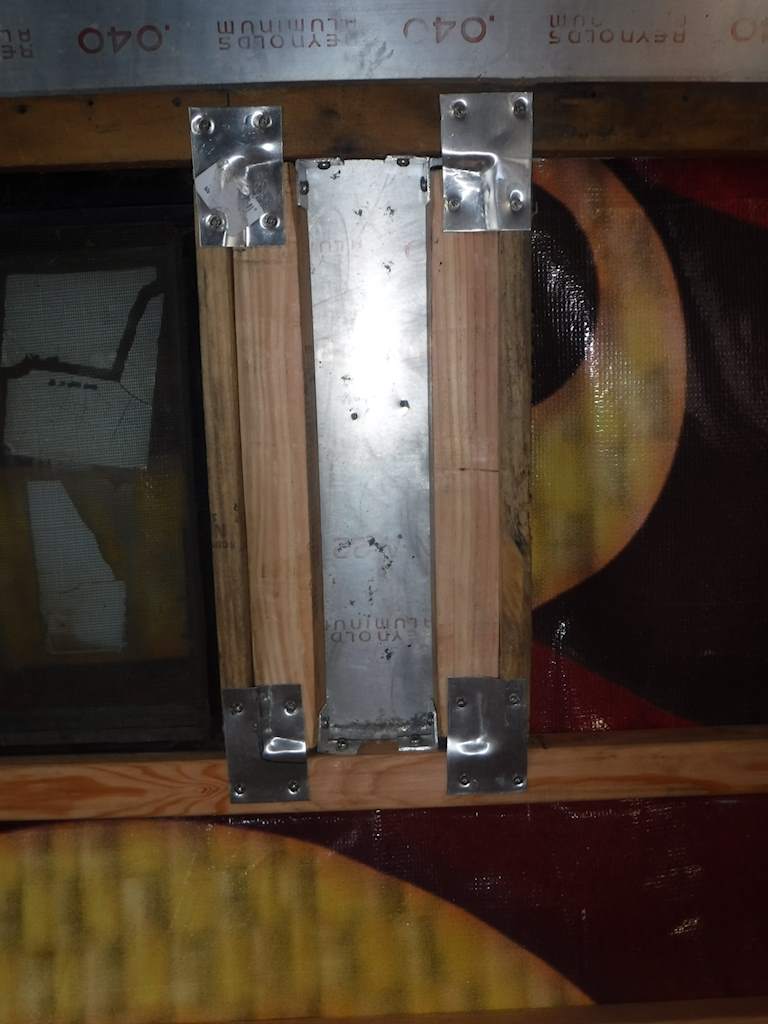
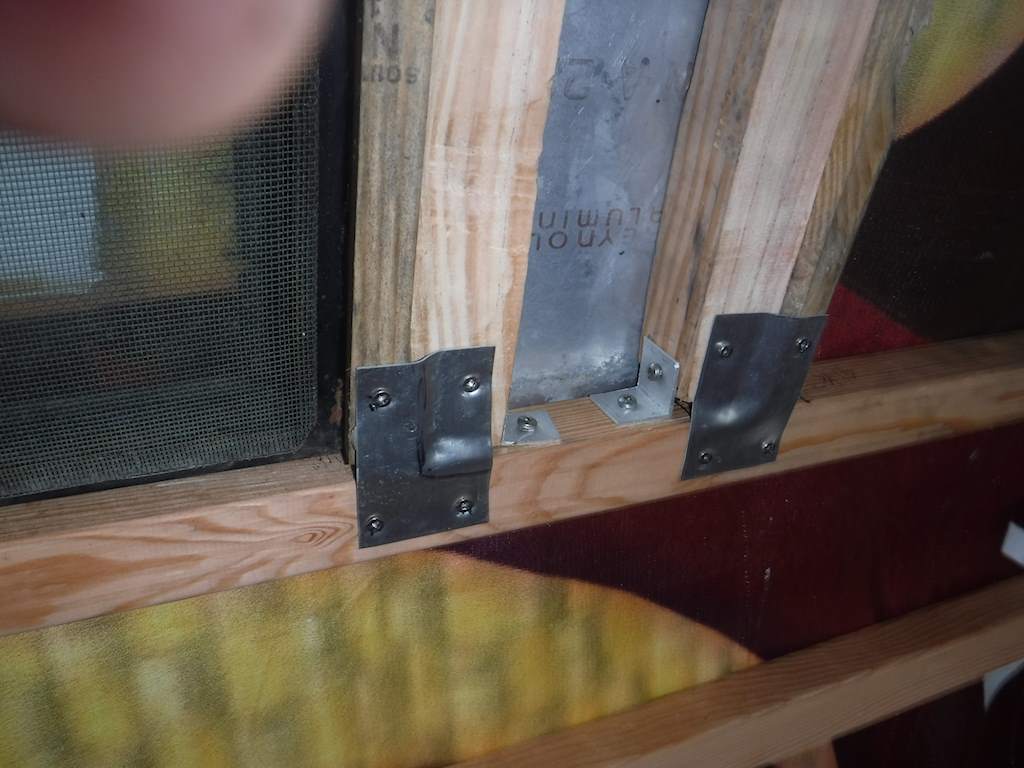 That seems to hold it pretty well. Now for a more interesting bit of carpentry. There’s a challenge around the windows. The window wants a flat surface, but the shell is of course curved. That would imply the presence of something like this:
That seems to hold it pretty well. Now for a more interesting bit of carpentry. There’s a challenge around the windows. The window wants a flat surface, but the shell is of course curved. That would imply the presence of something like this: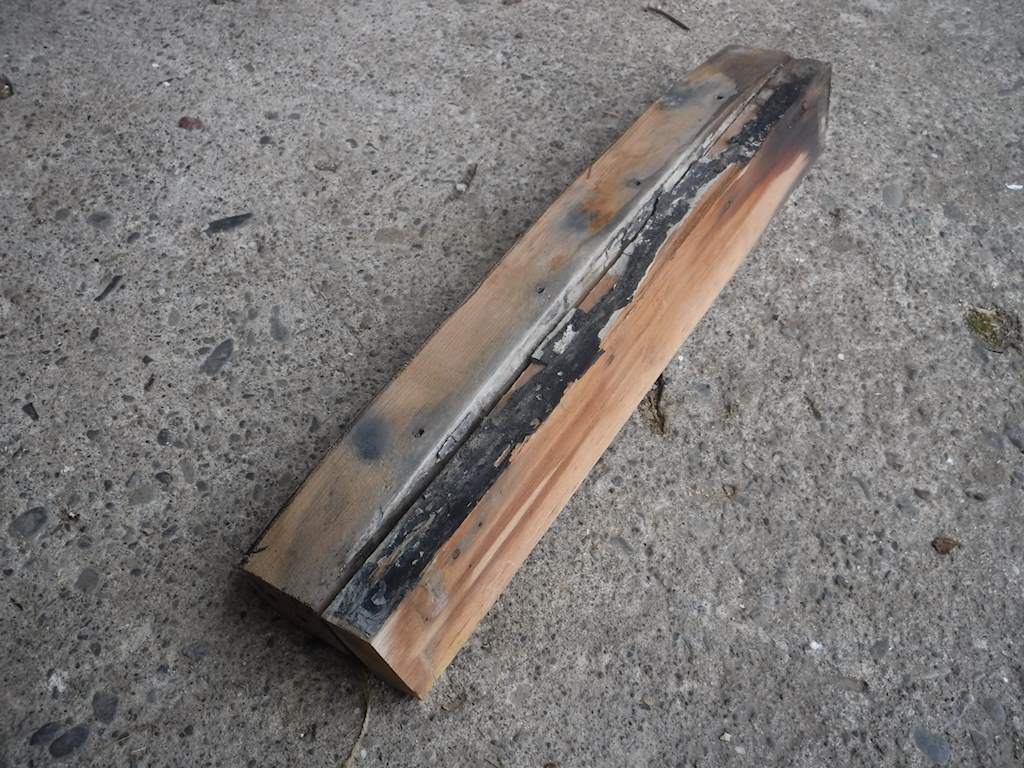
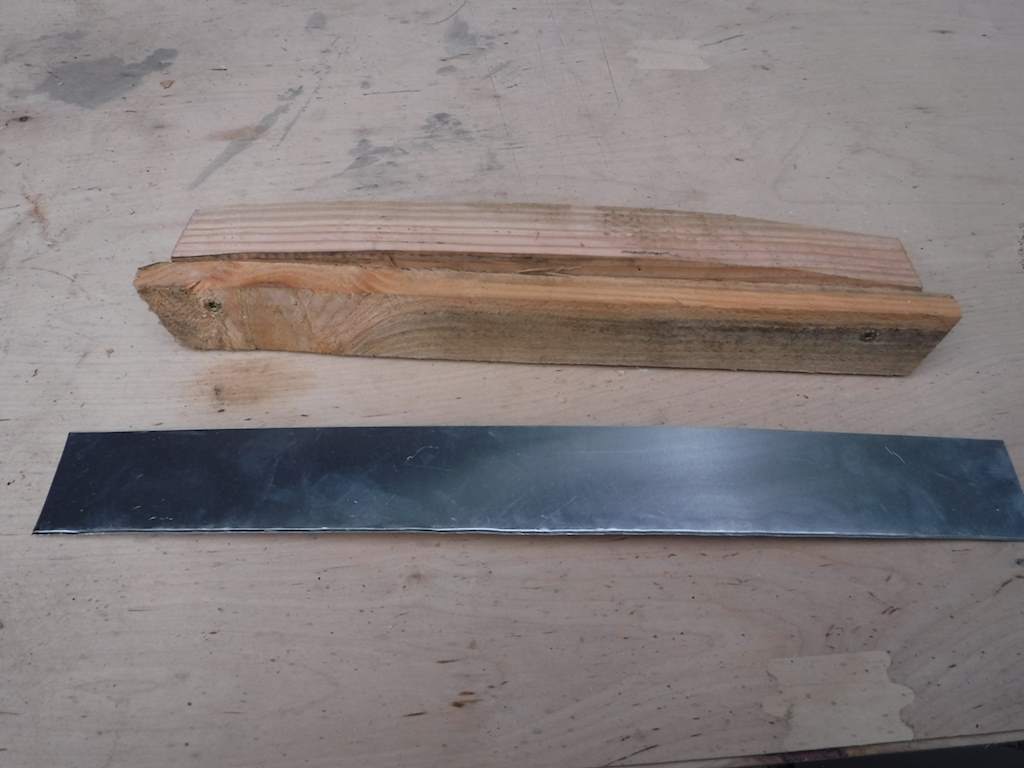 and cut some aluminum sheet. Clamped the wood into my vise, and clamped on the aluminum.
and cut some aluminum sheet. Clamped the wood into my vise, and clamped on the aluminum.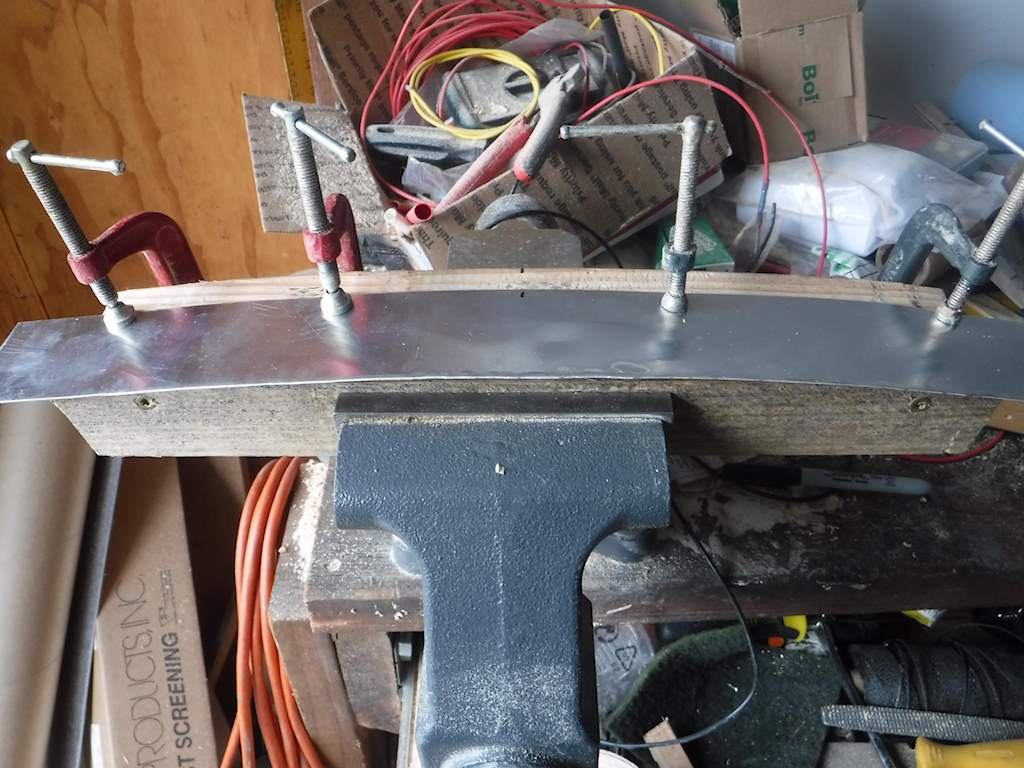
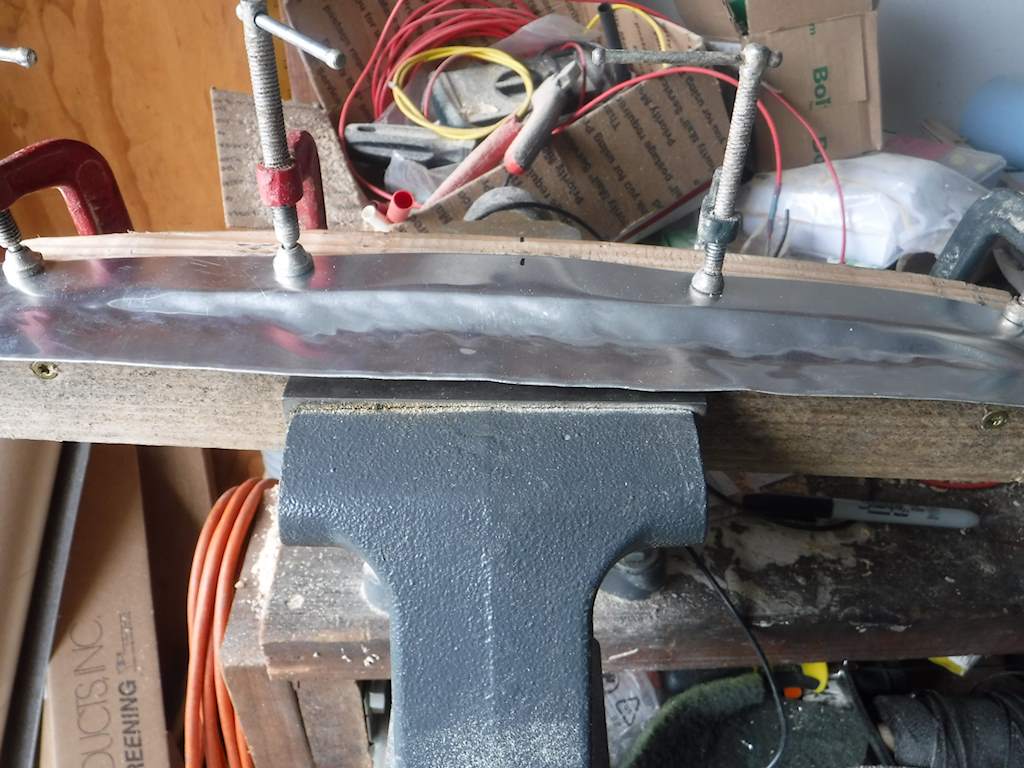
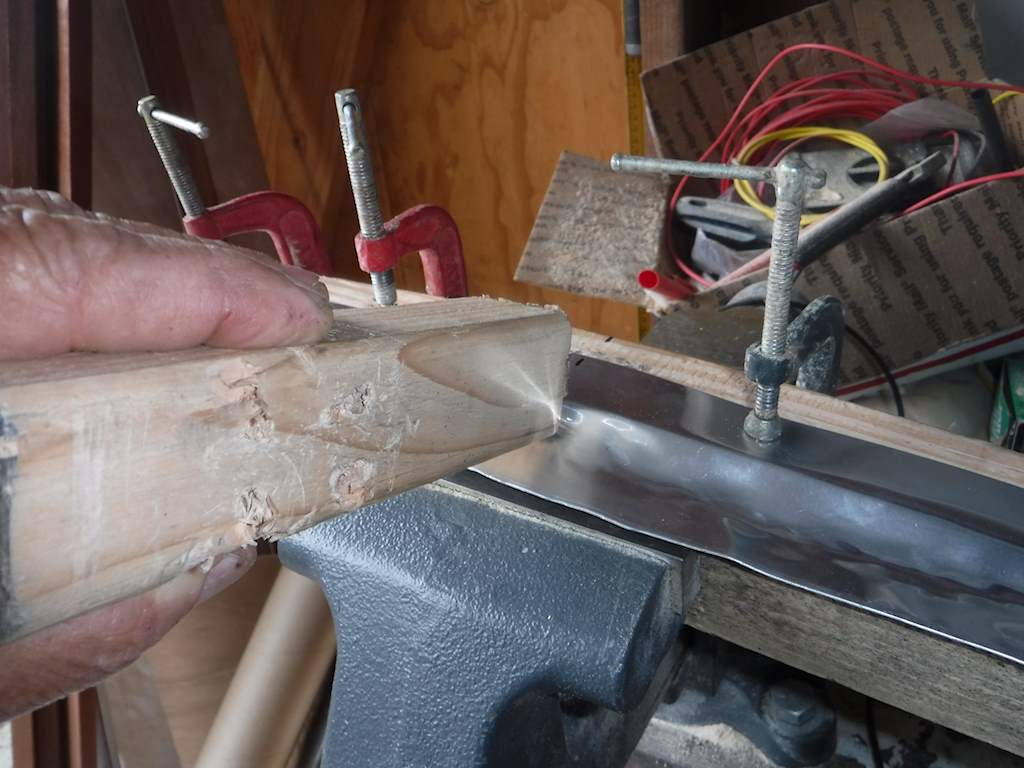
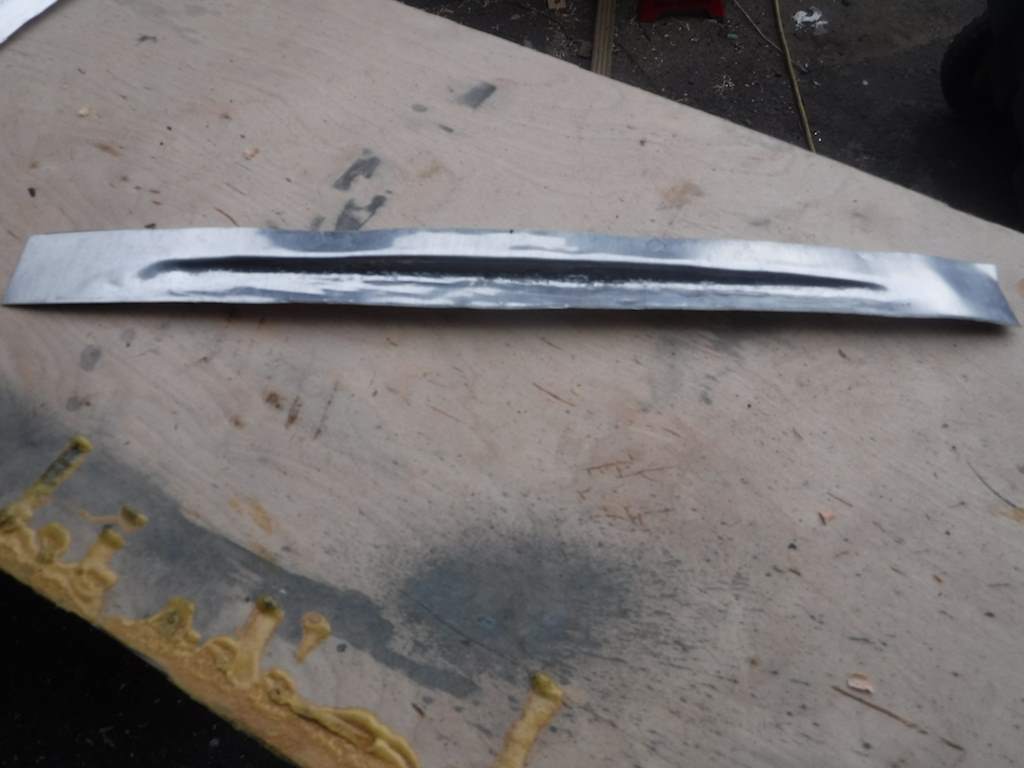 s.
s.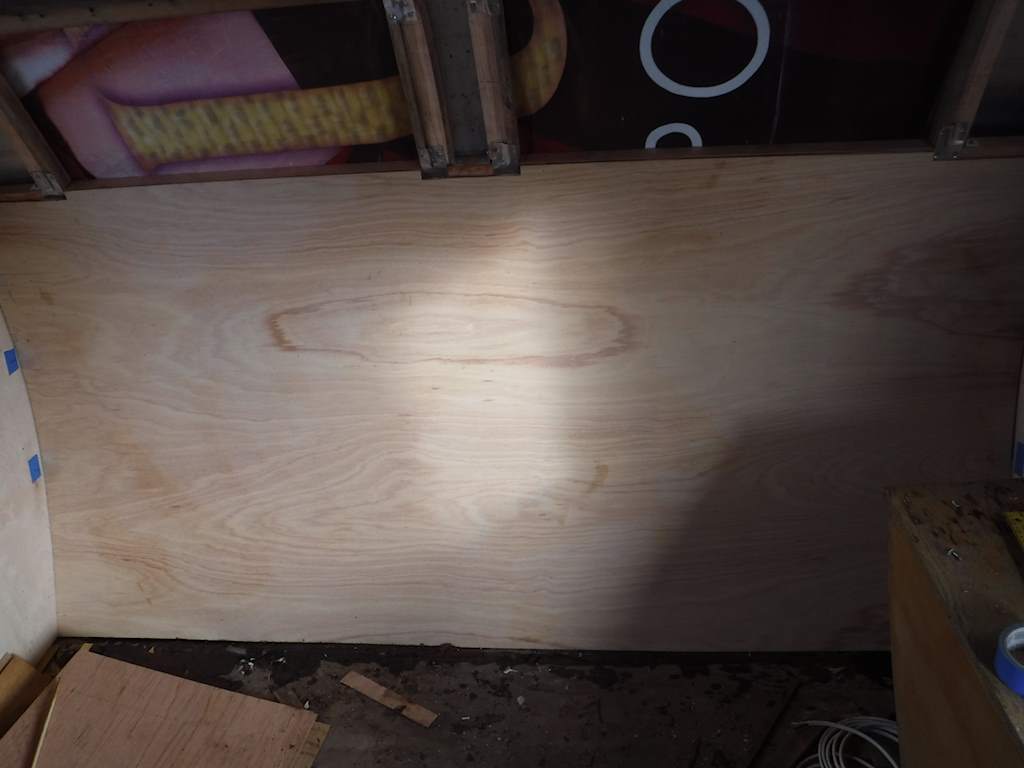
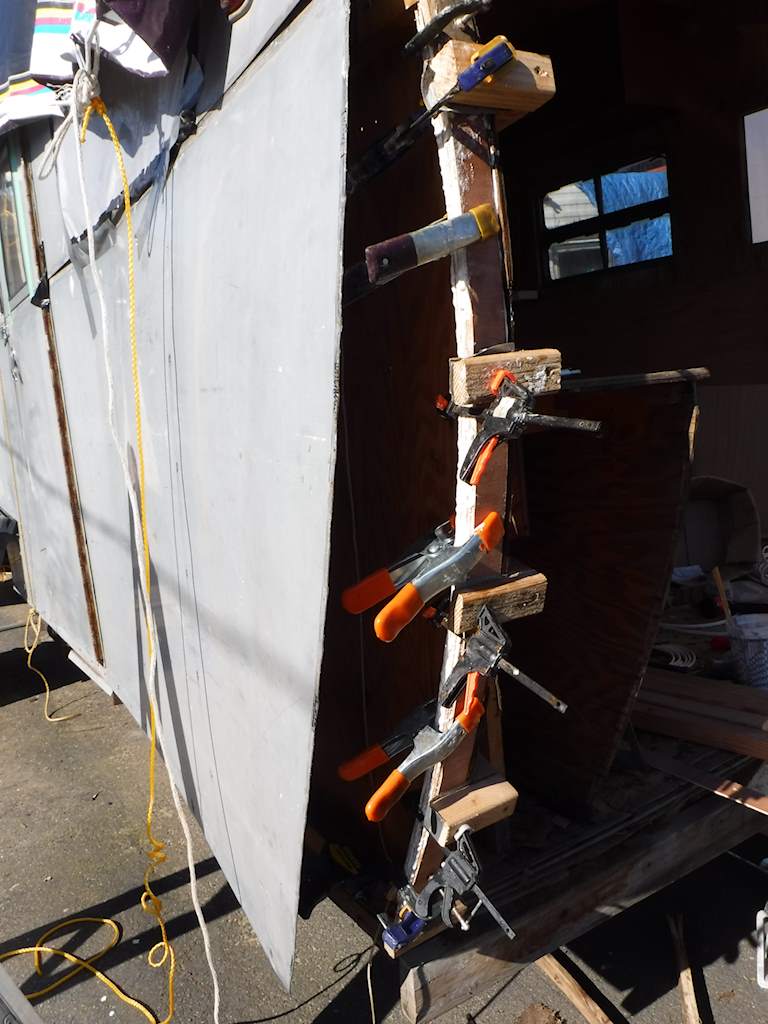
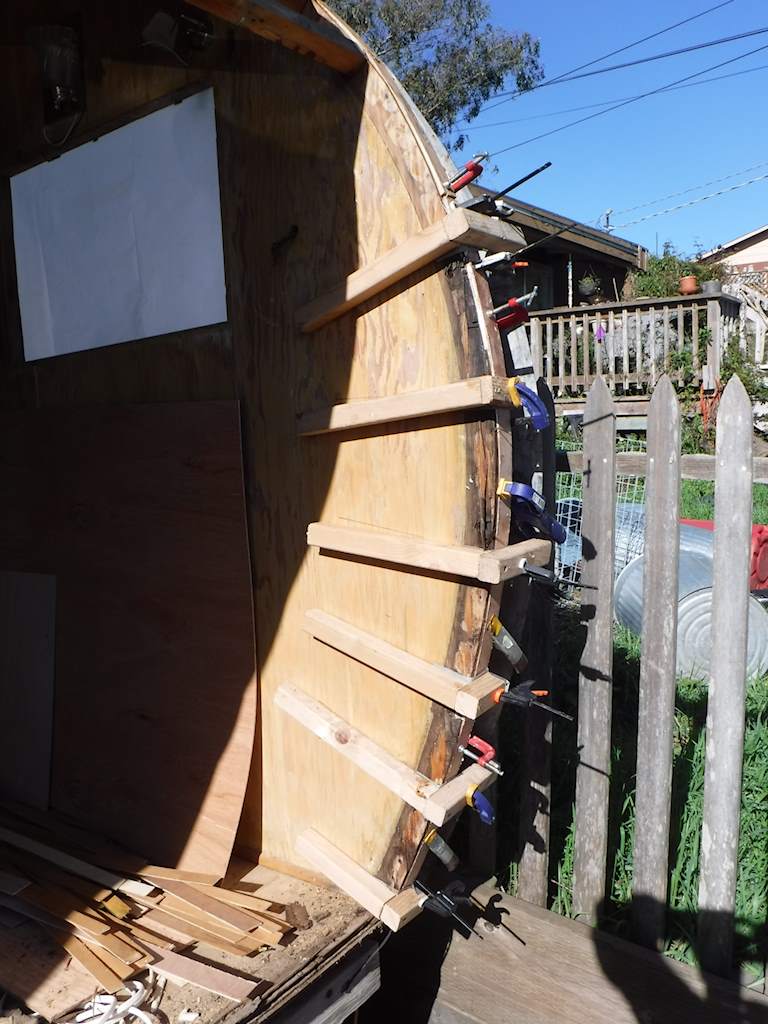
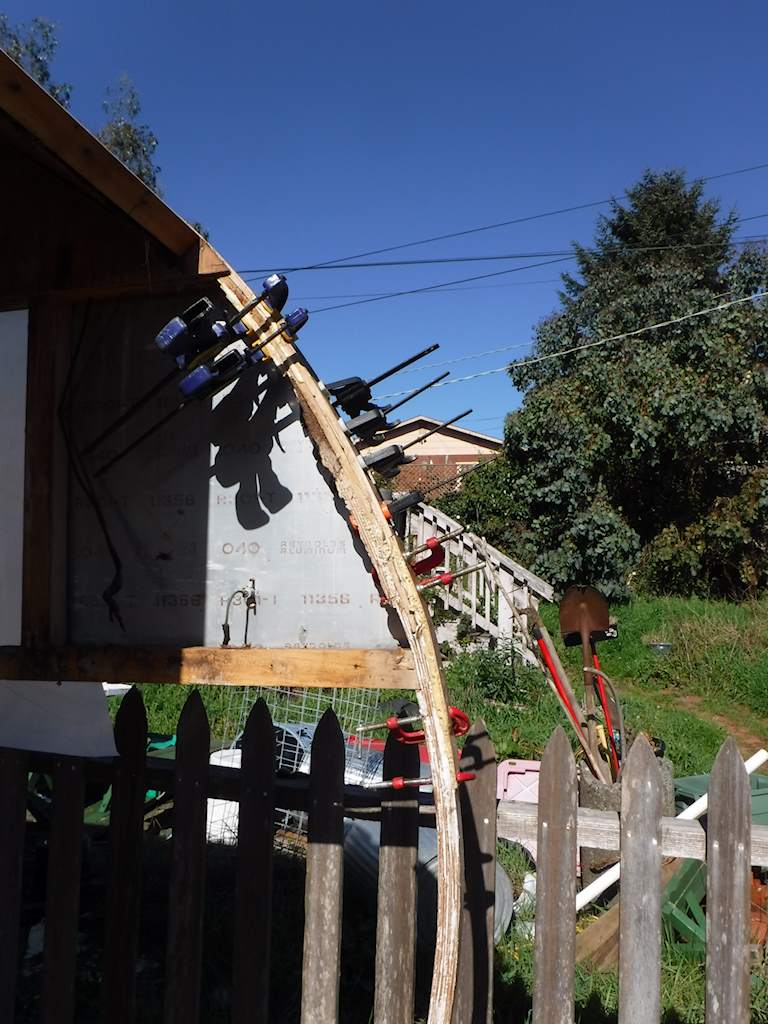
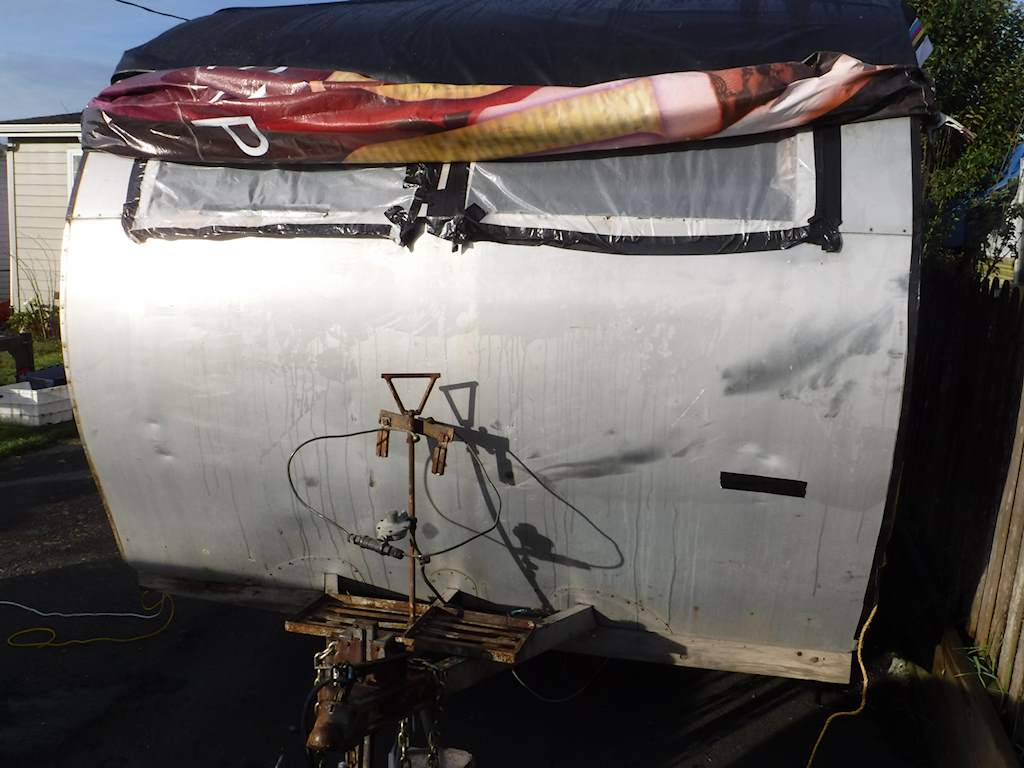
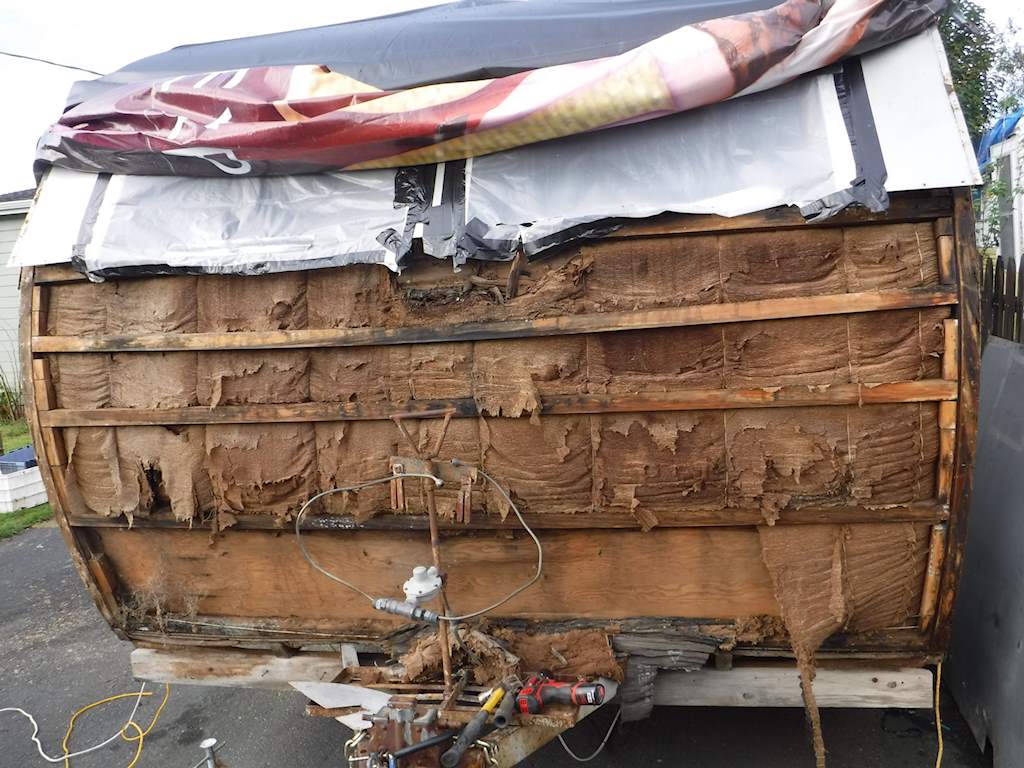
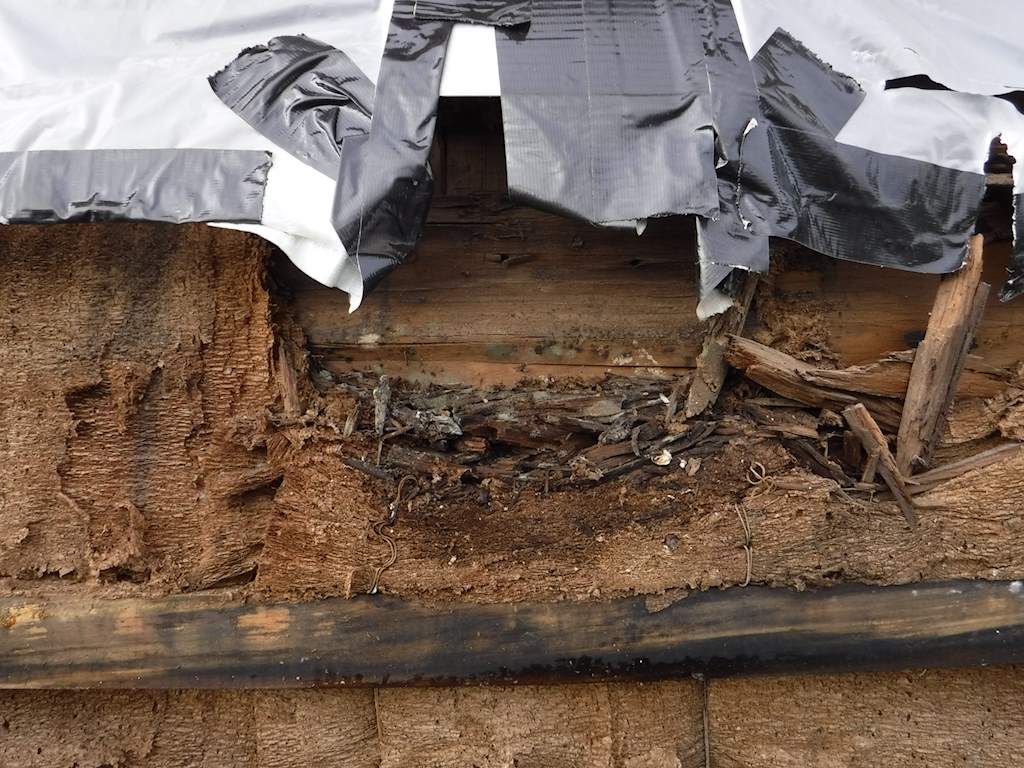
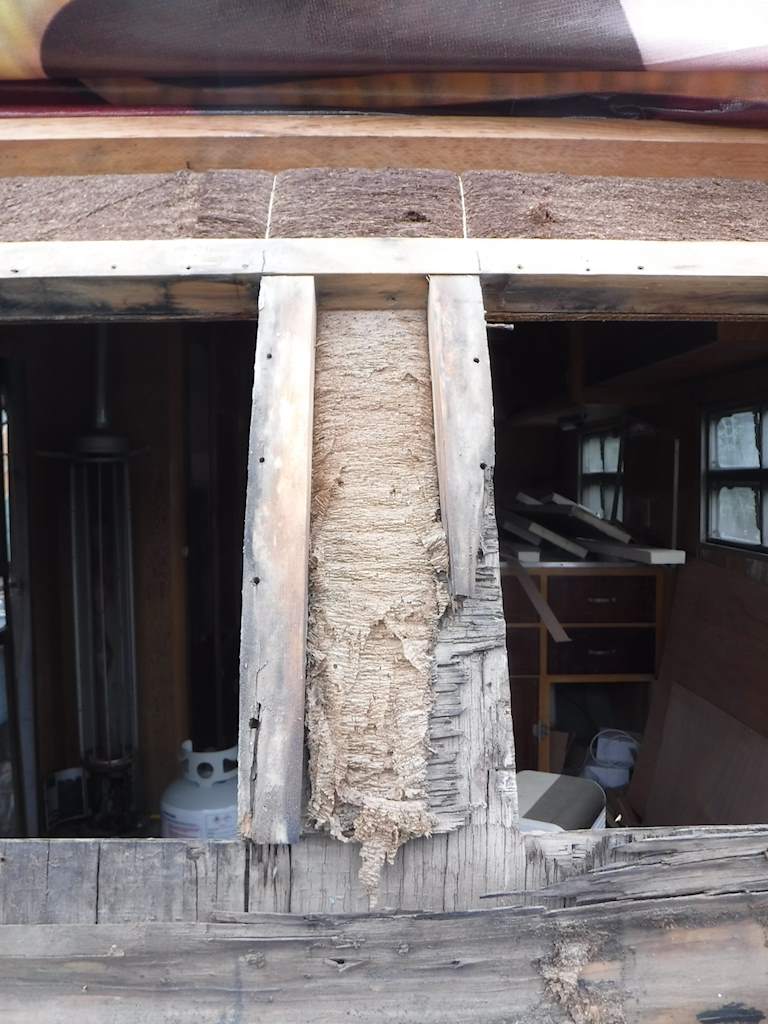
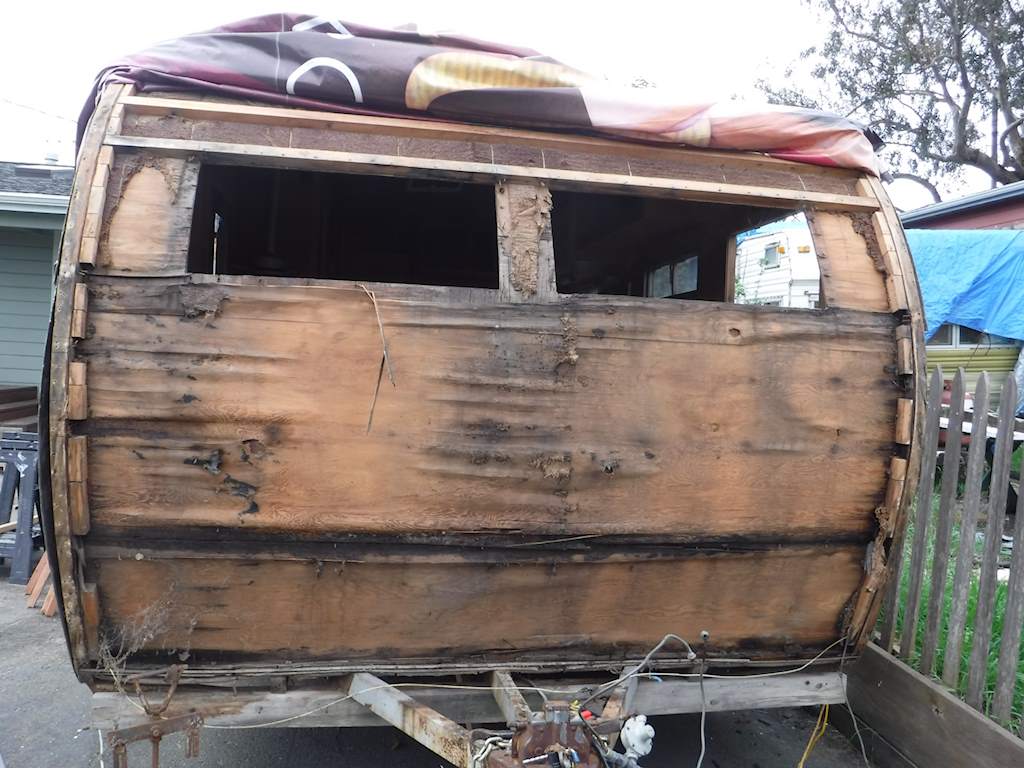
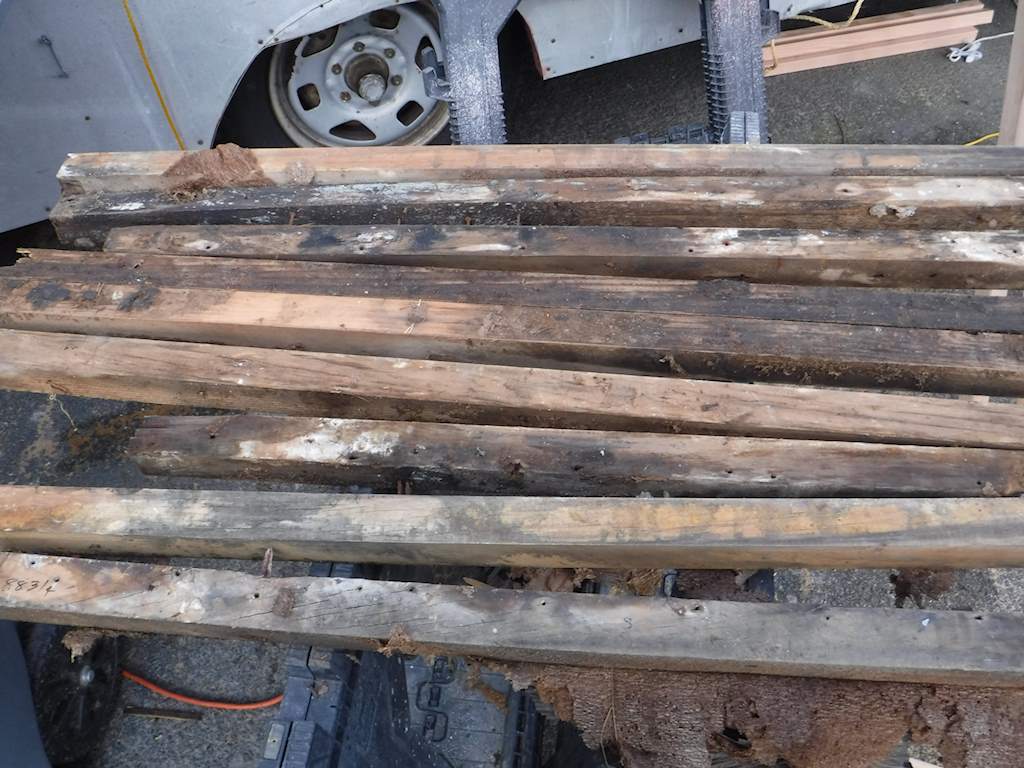
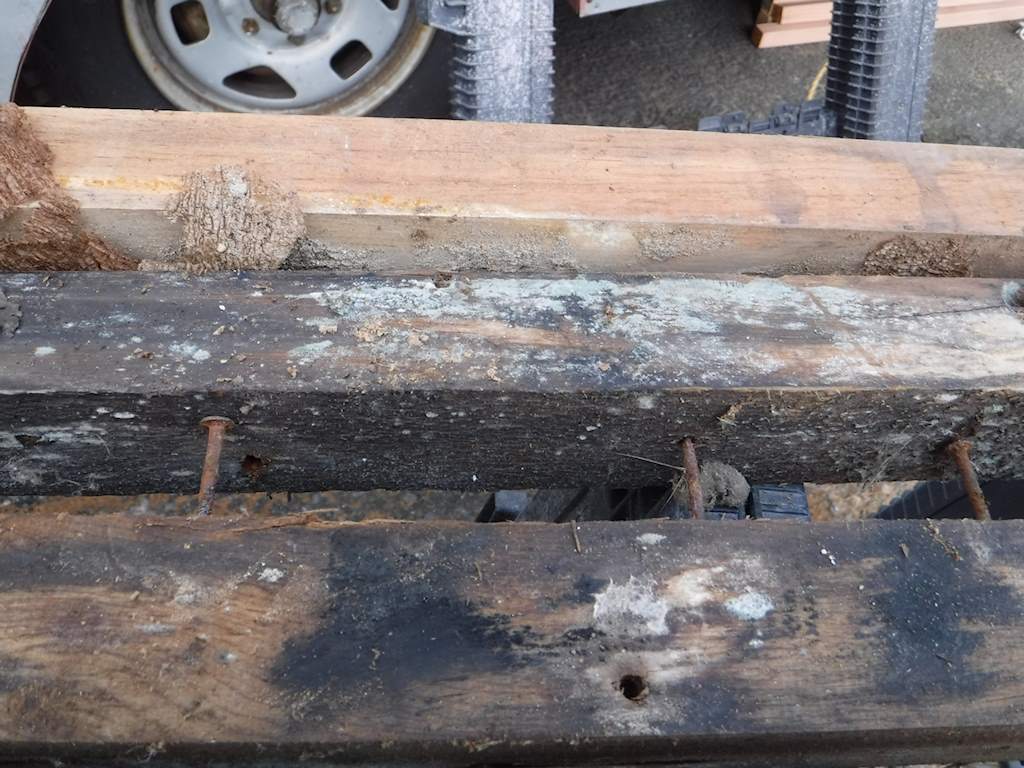 After marking the locations of the 2×2’s and cutting the new horizontal supports I pulled off first two panels of the inner skin. The whole front of the trailer is now open. Then I made some rough L-brackets and attached them to the side panels so I can replace the lower part of the corner curved beams. I guess you’d call them beams, although they are pretty weak. Here’s the left side.
After marking the locations of the 2×2’s and cutting the new horizontal supports I pulled off first two panels of the inner skin. The whole front of the trailer is now open. Then I made some rough L-brackets and attached them to the side panels so I can replace the lower part of the corner curved beams. I guess you’d call them beams, although they are pretty weak. Here’s the left side.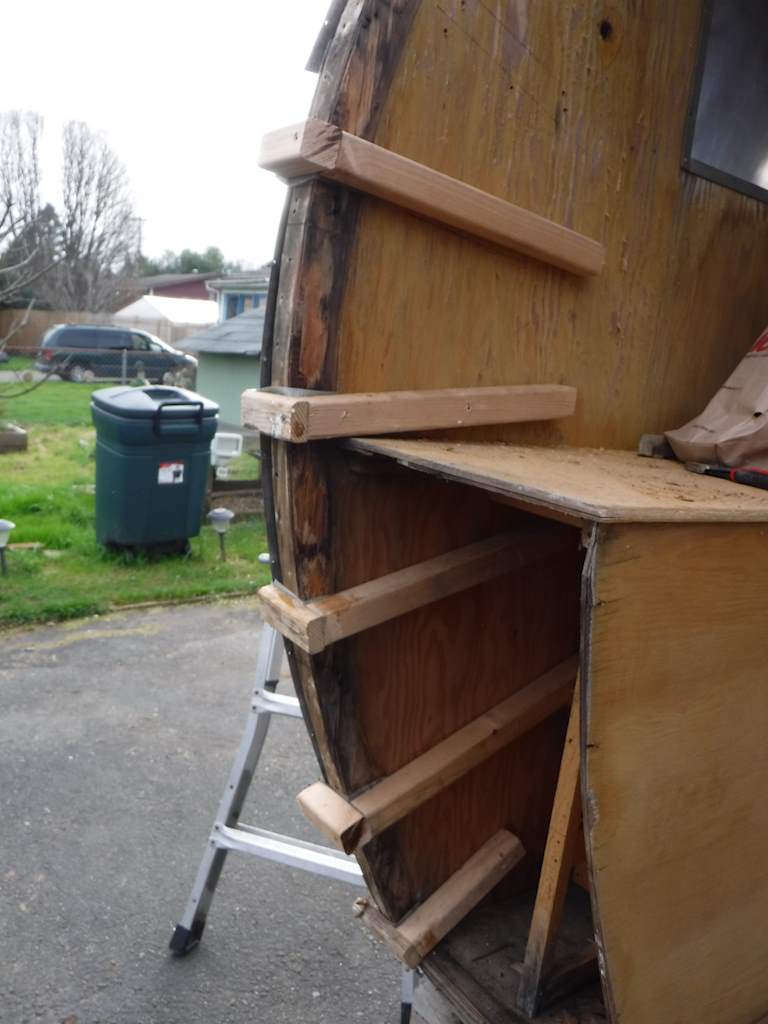
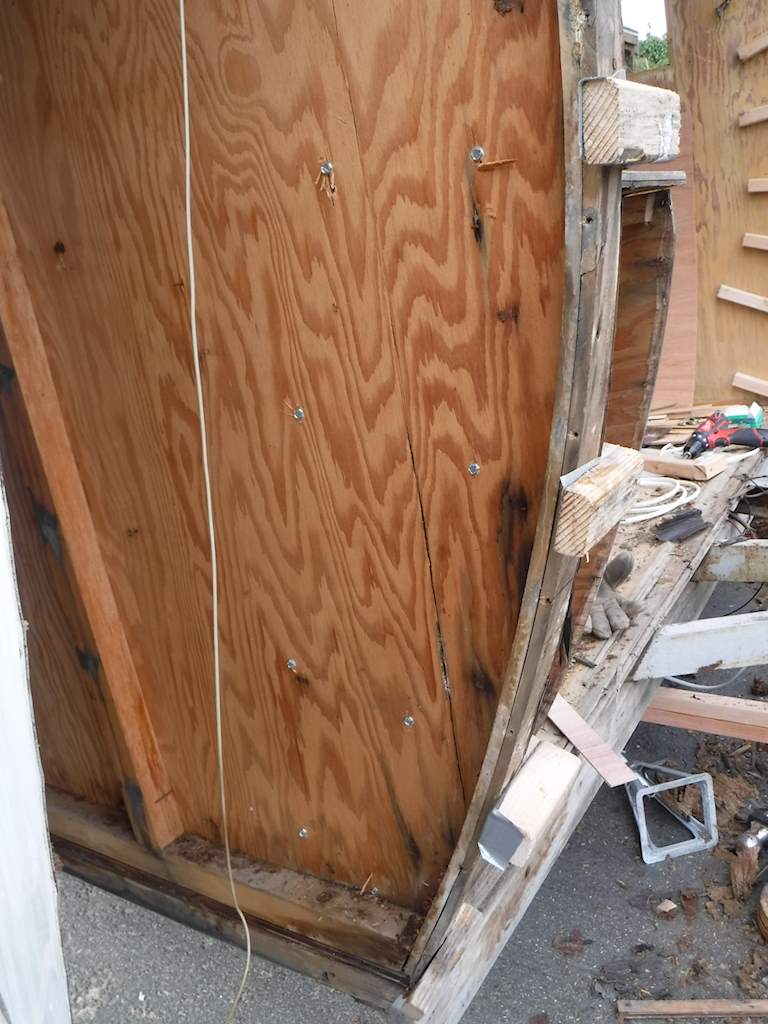
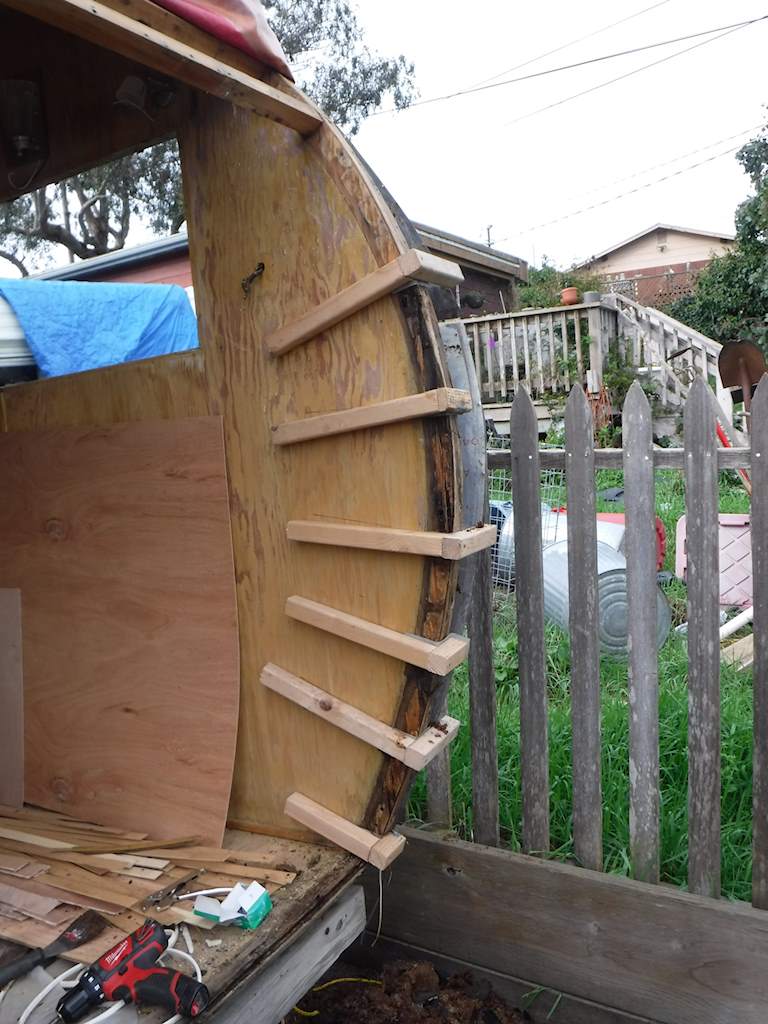
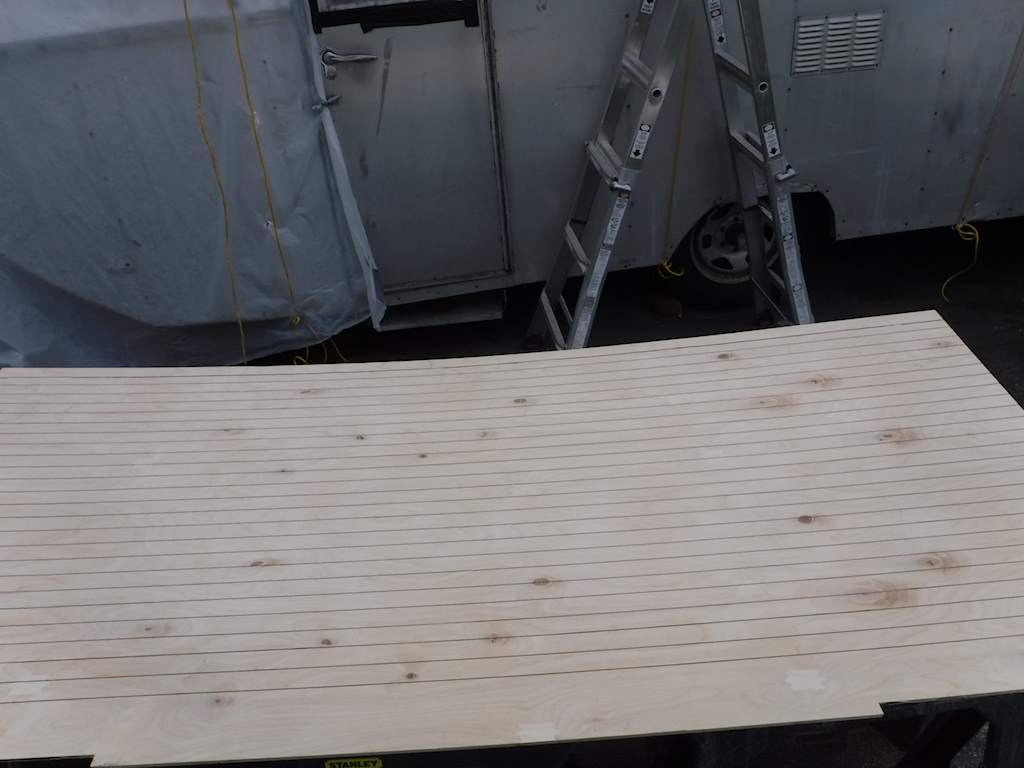
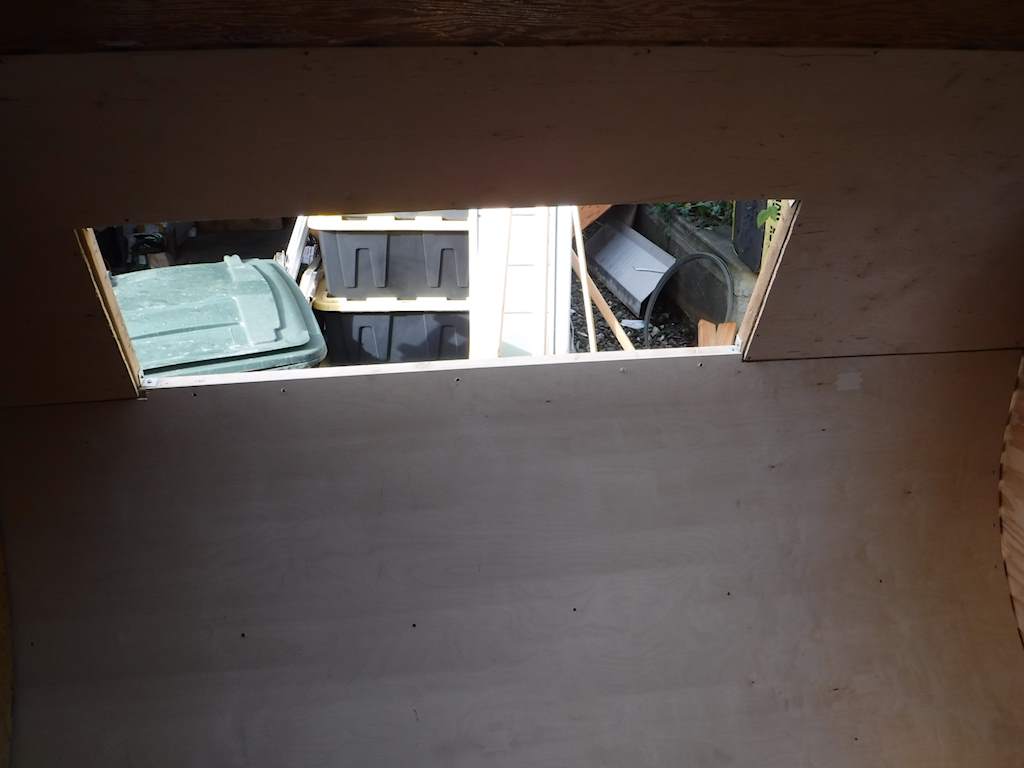
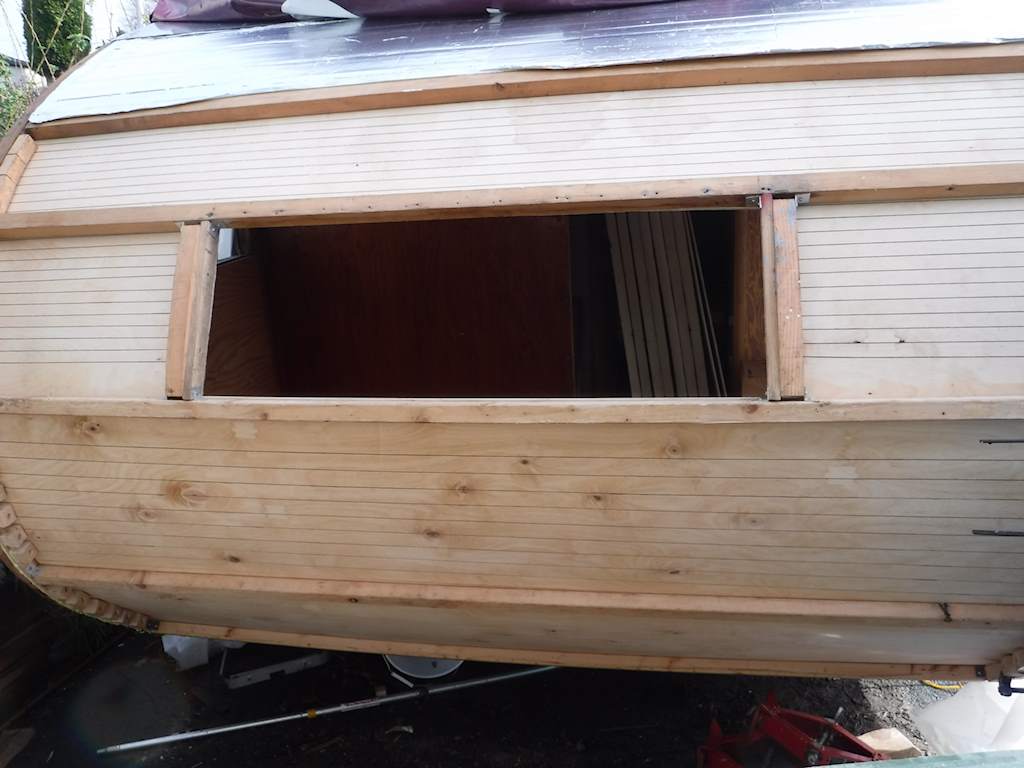
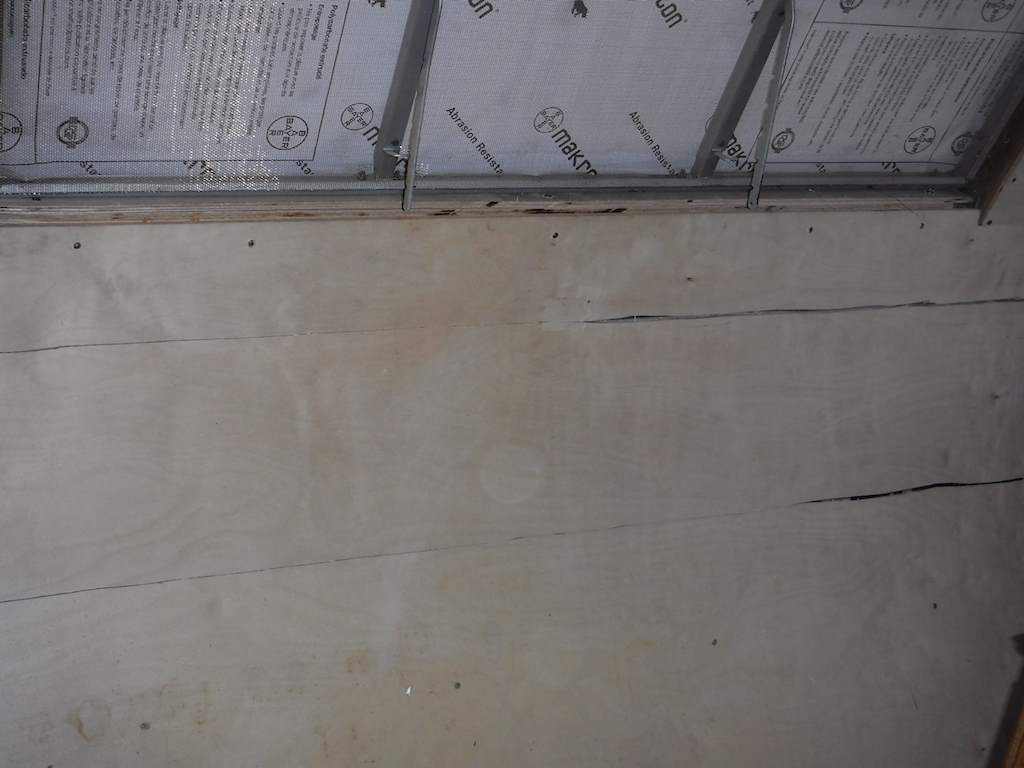
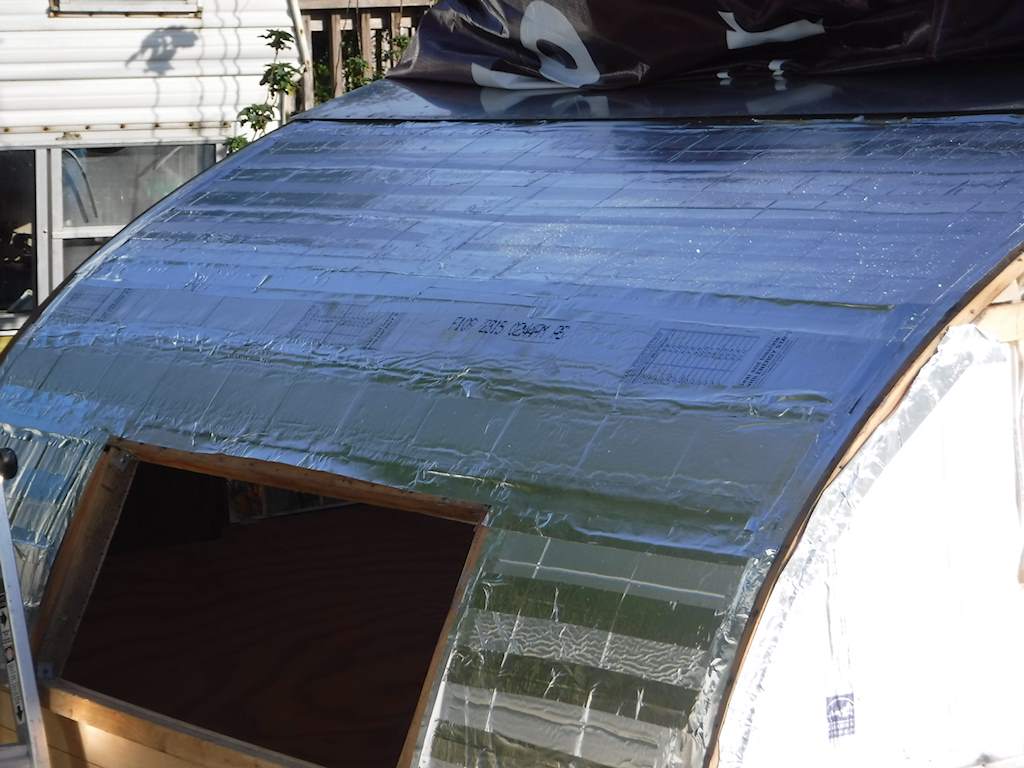
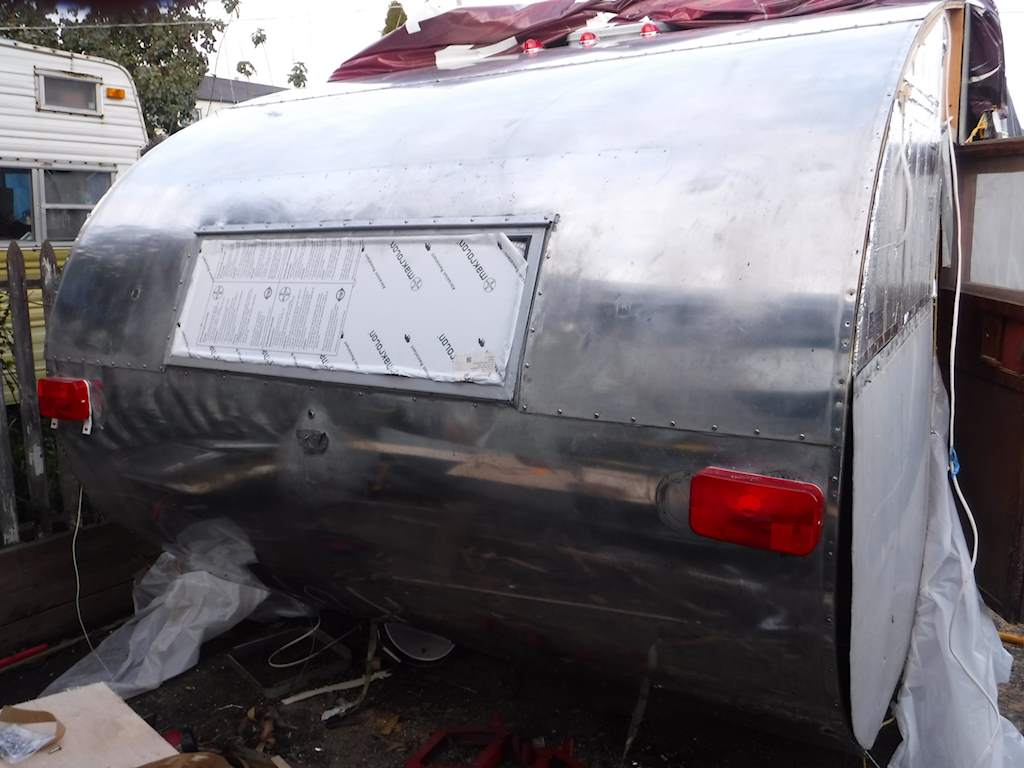 All overlaps sealed with butyl tape of course. The left and right sides along the window have a hand-formed aluminum piece to cover the wood. Any competent metalworker would sneer at what I did, but it fits fairly well and the wood won’t rot there like the original did.
All overlaps sealed with butyl tape of course. The left and right sides along the window have a hand-formed aluminum piece to cover the wood. Any competent metalworker would sneer at what I did, but it fits fairly well and the wood won’t rot there like the original did.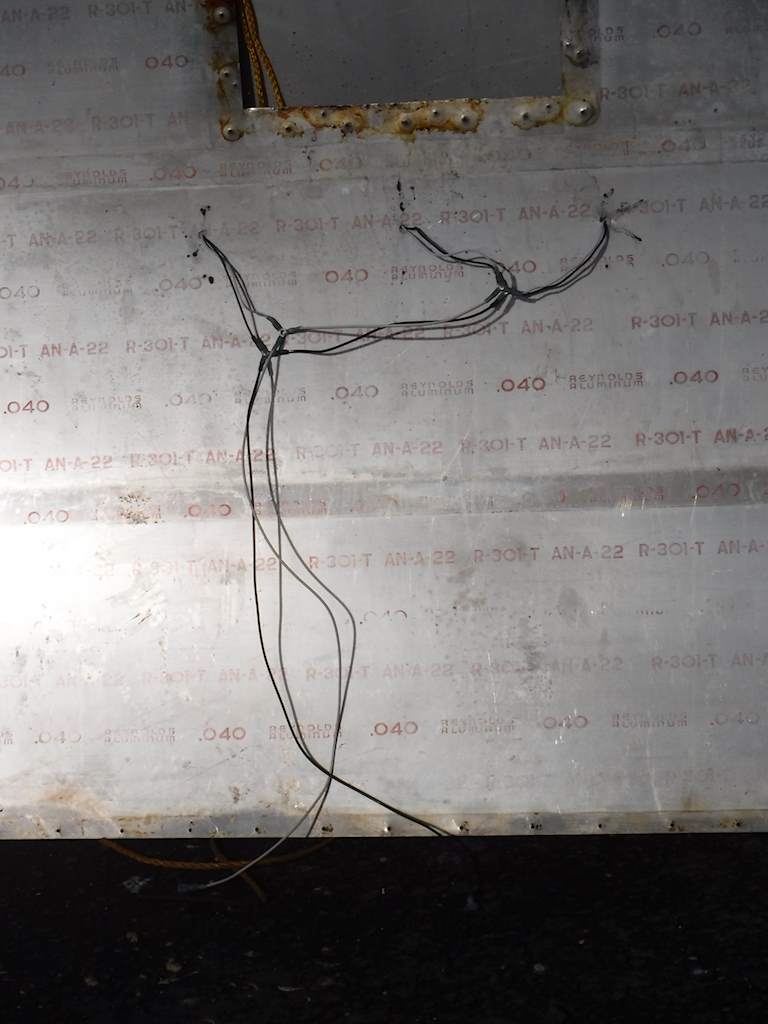
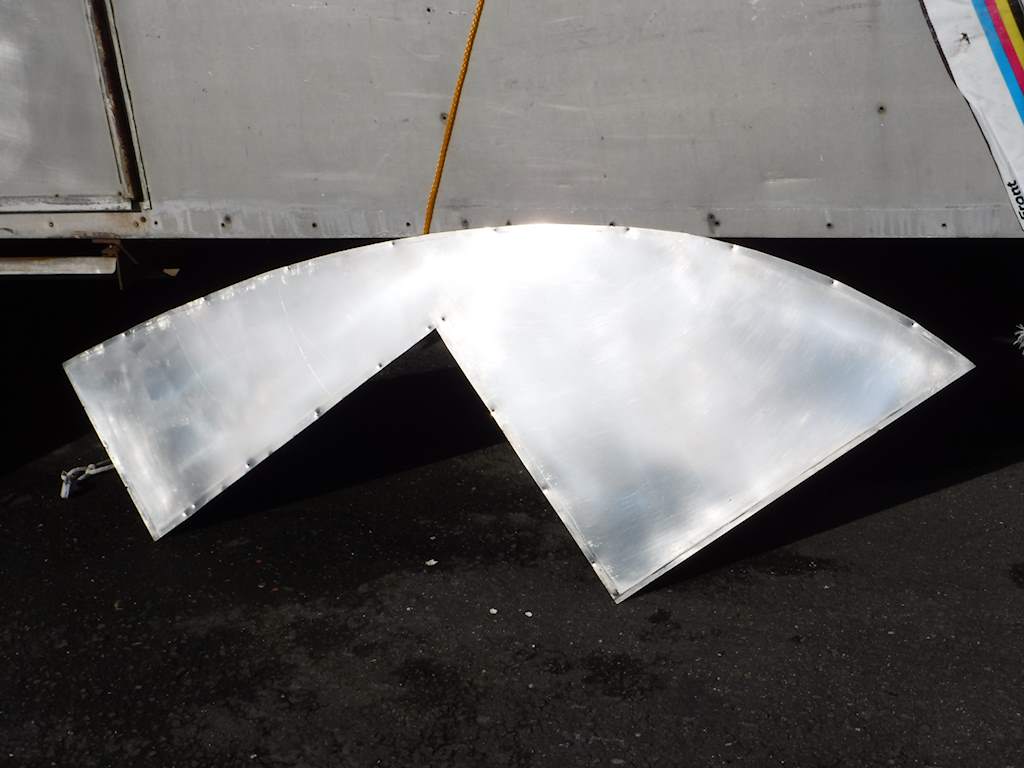
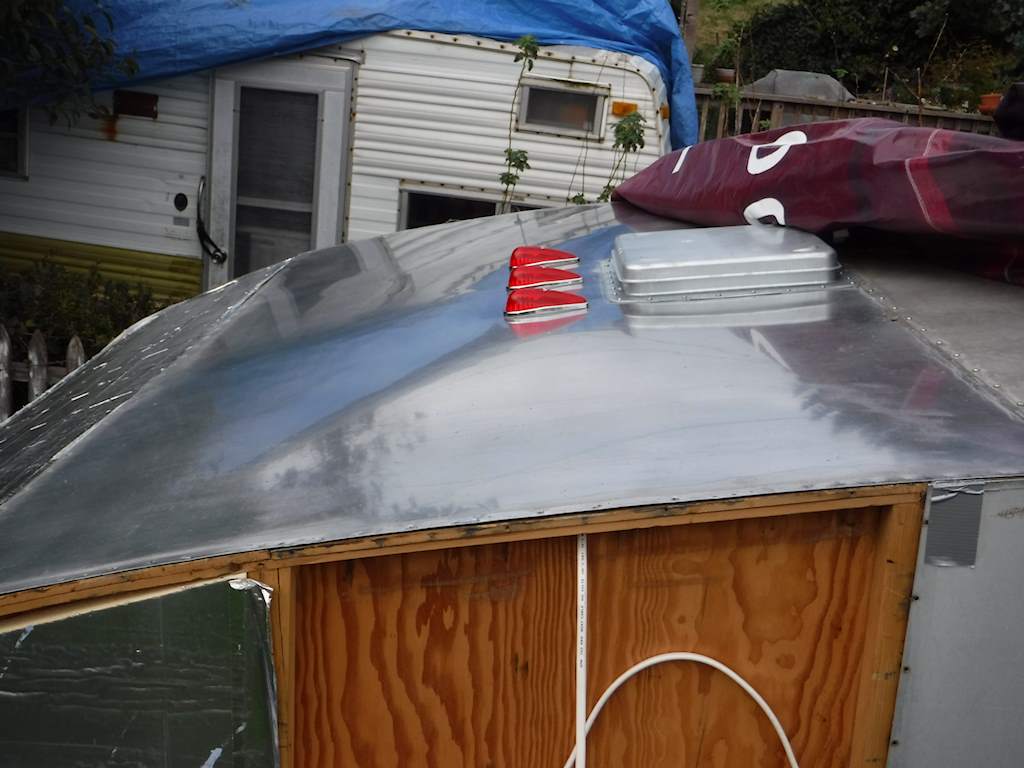
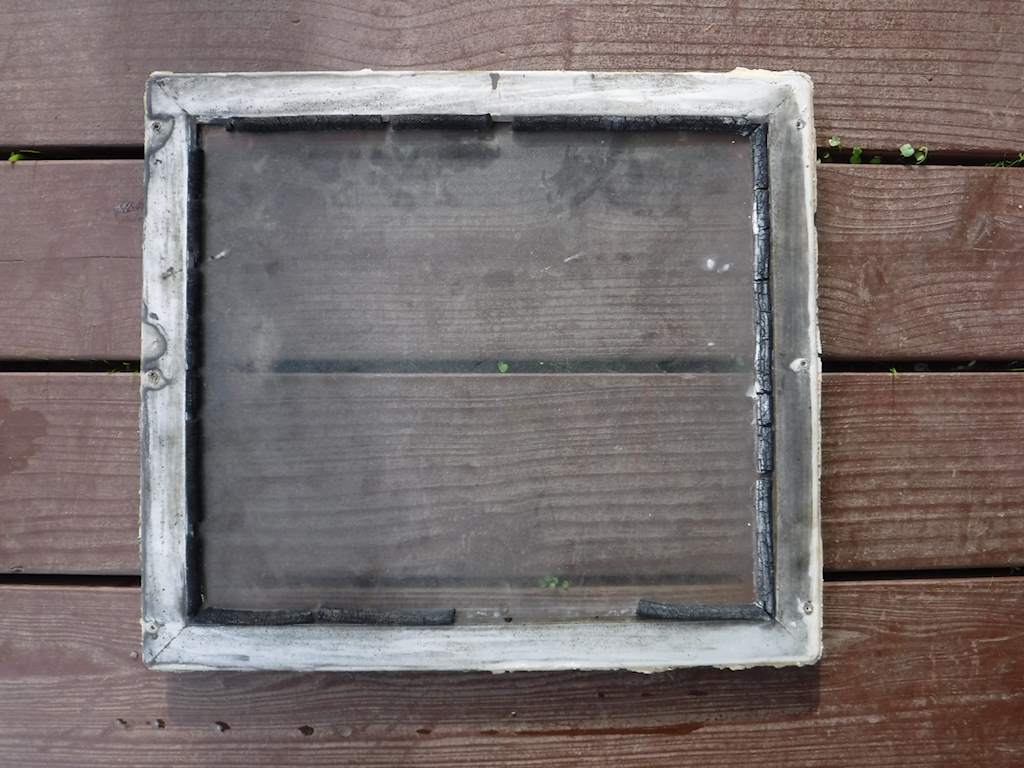
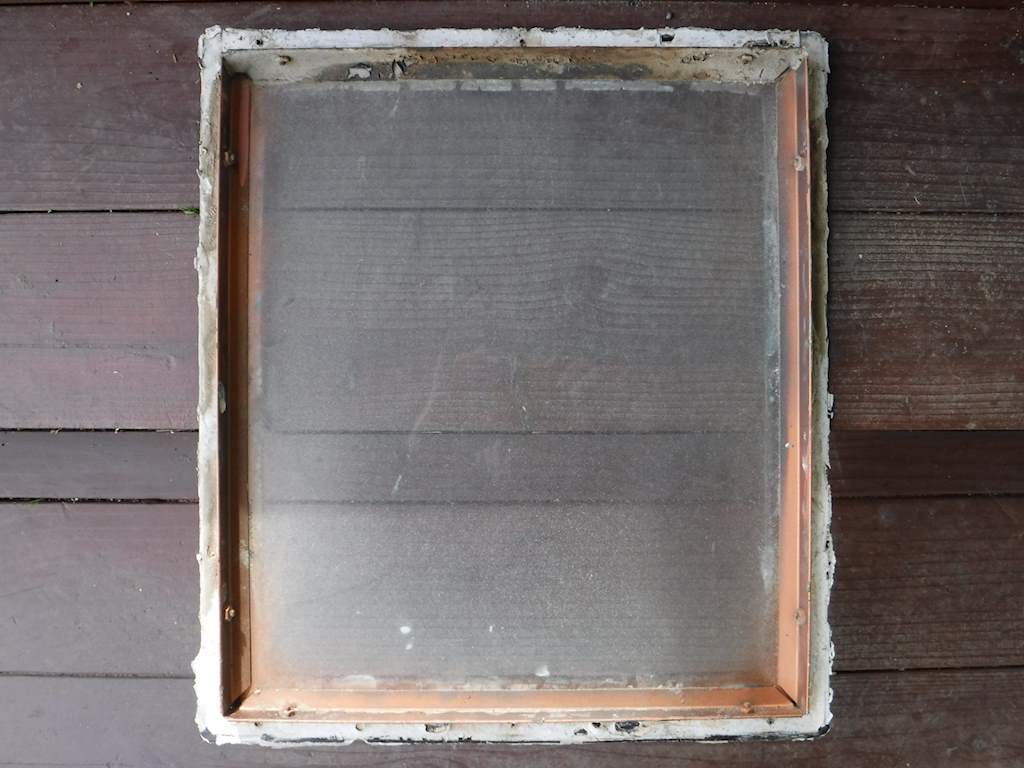 with (as mentioned previously) two different kinds of putty on that. Two completely useless attempts to stop leaks without doing it right. After scraping, wire brushing, and cleaning looked like this:
with (as mentioned previously) two different kinds of putty on that. Two completely useless attempts to stop leaks without doing it right. After scraping, wire brushing, and cleaning looked like this: